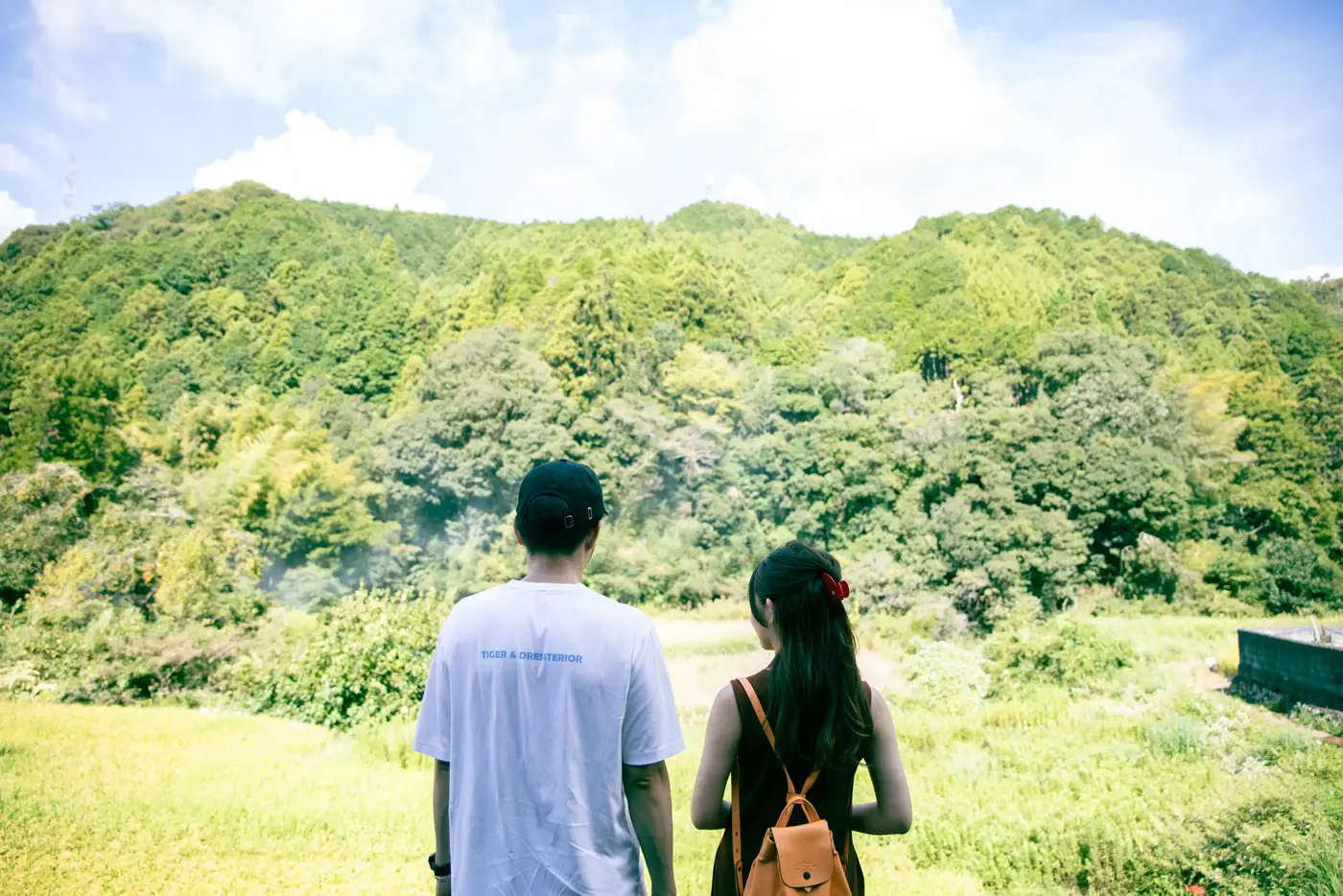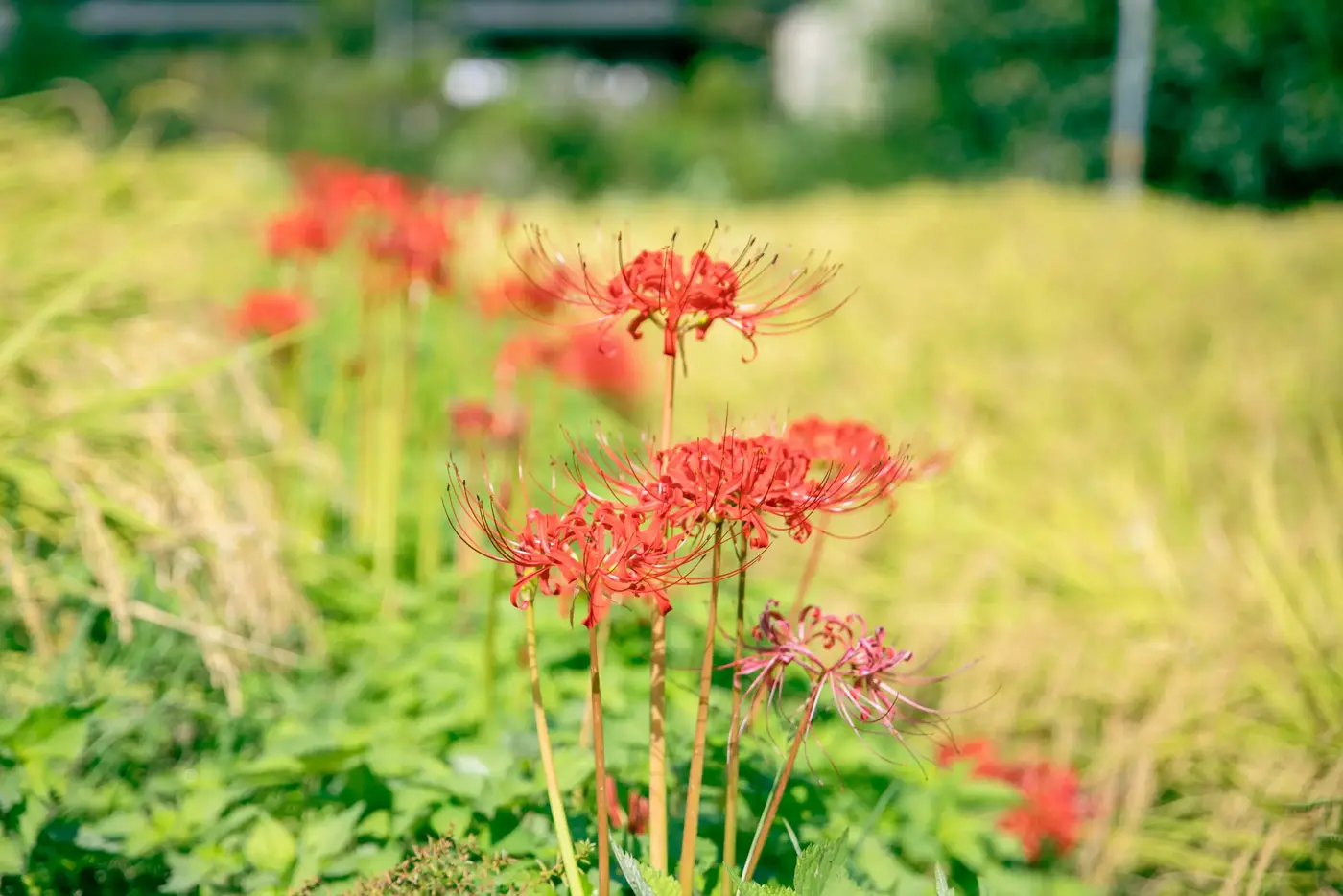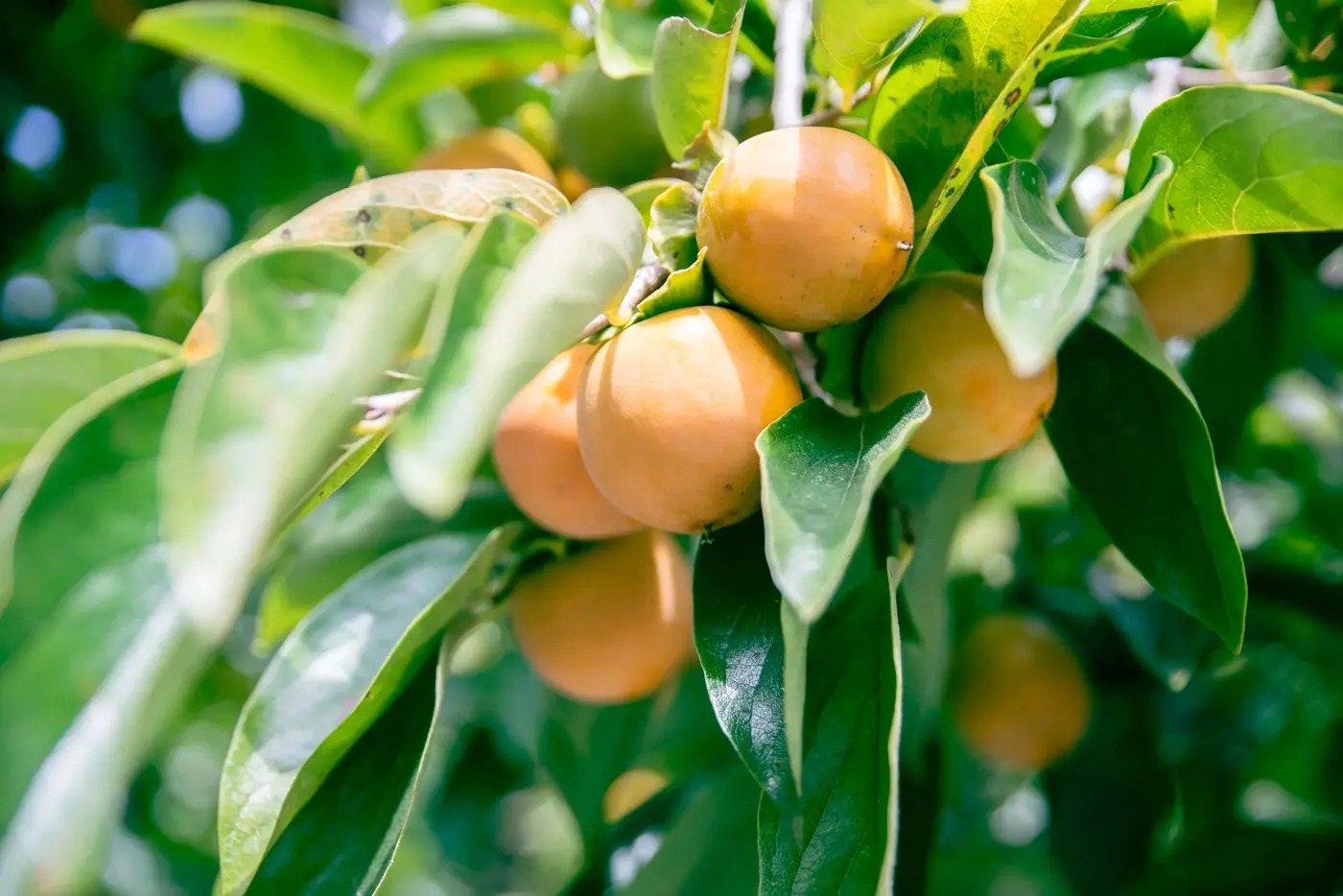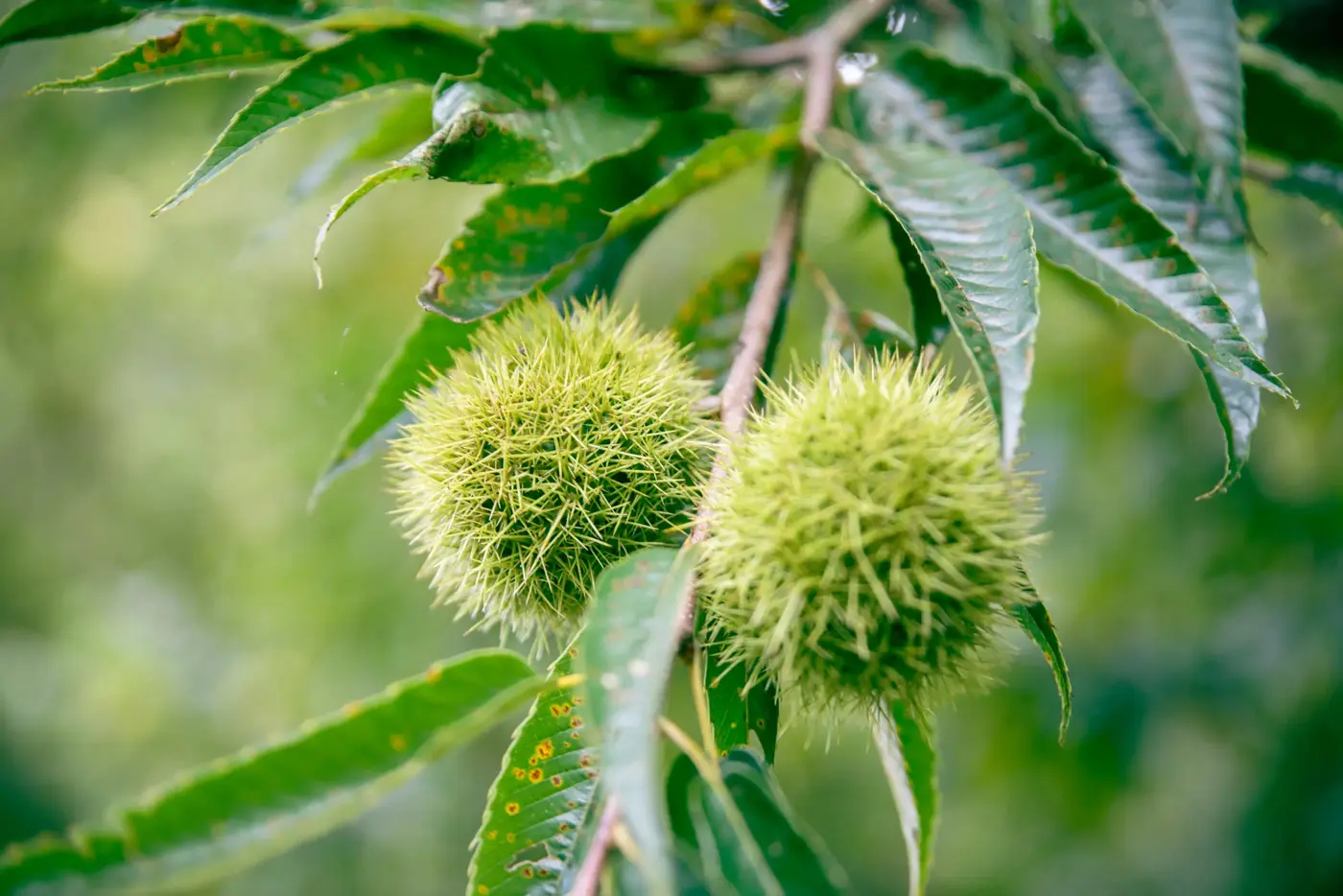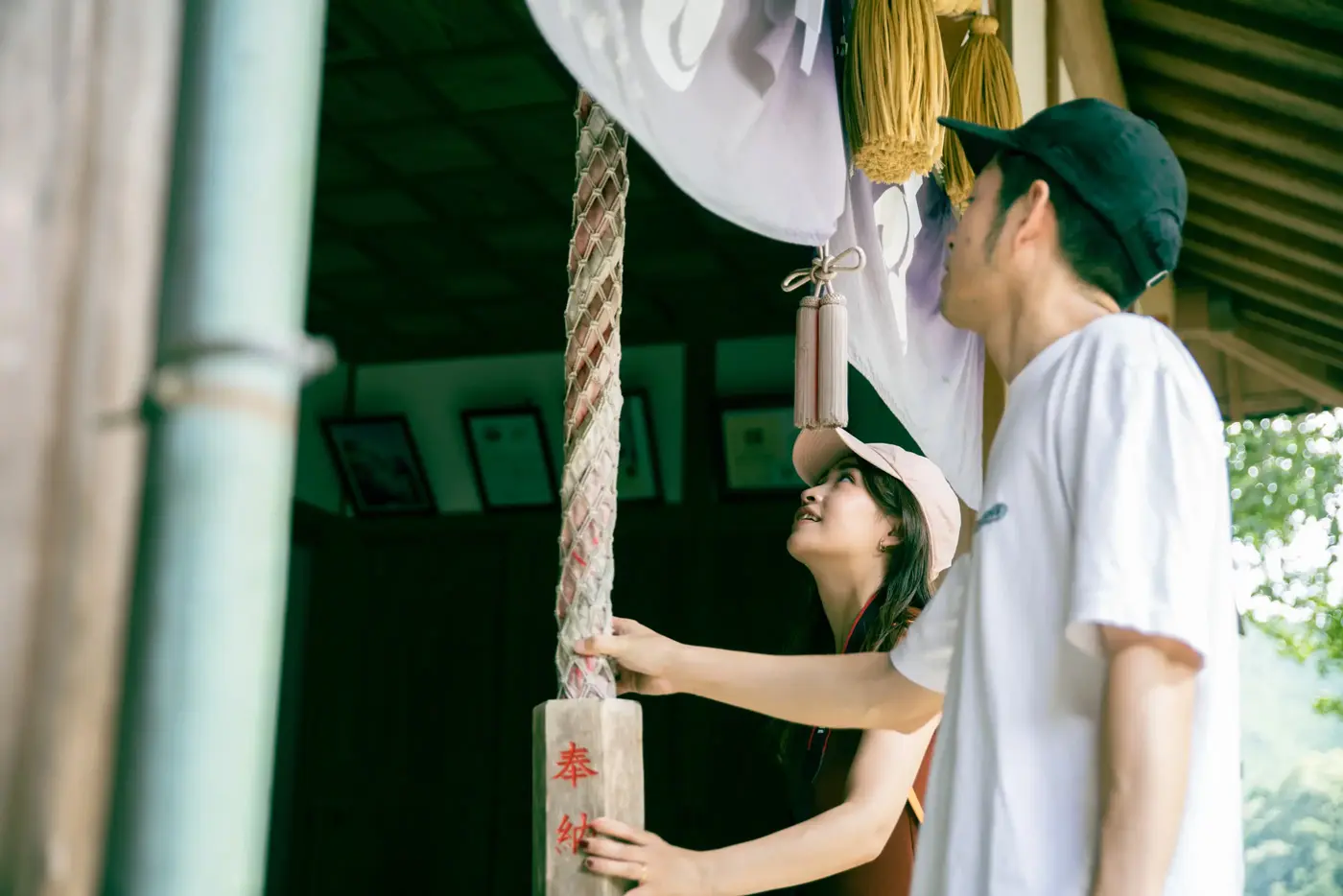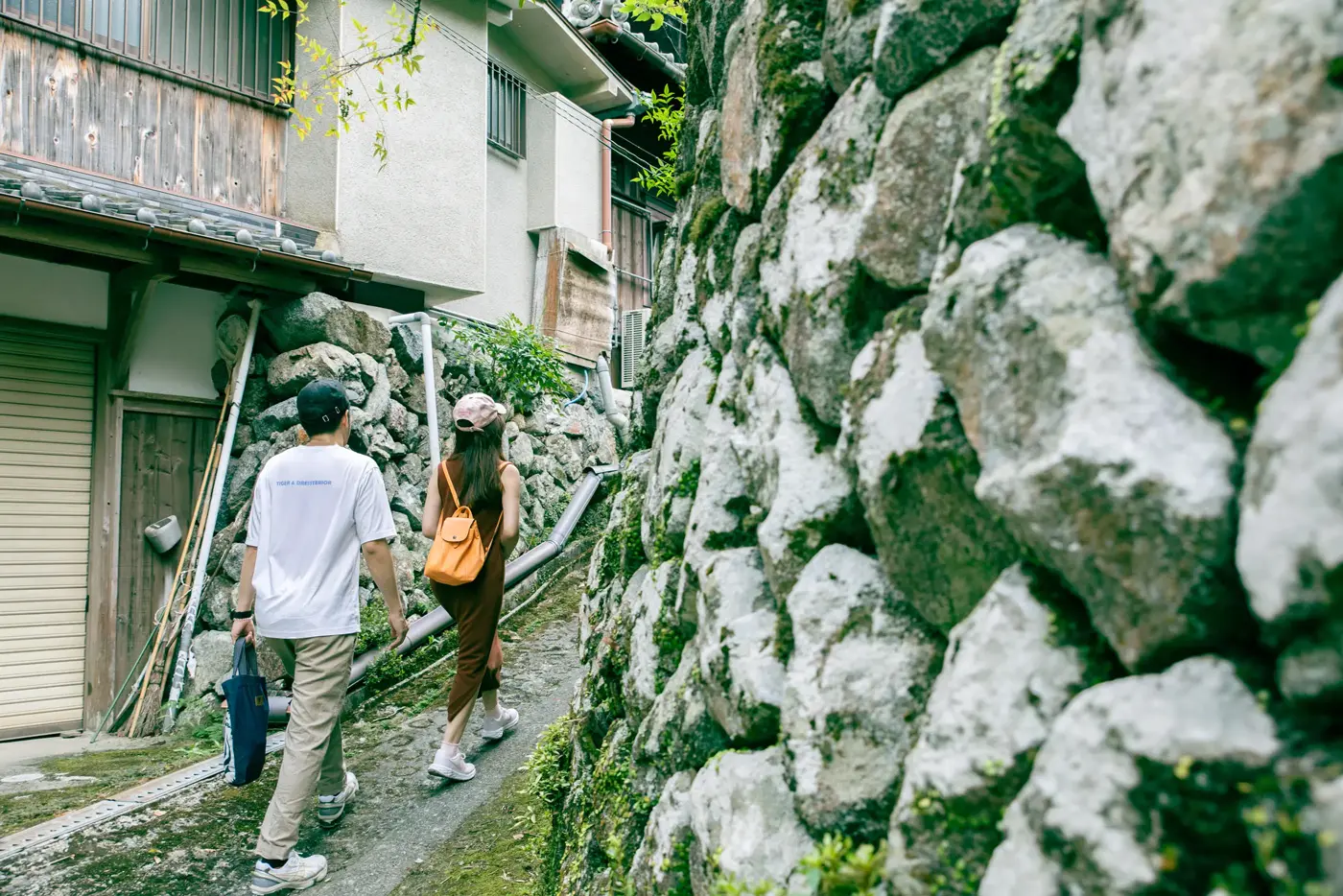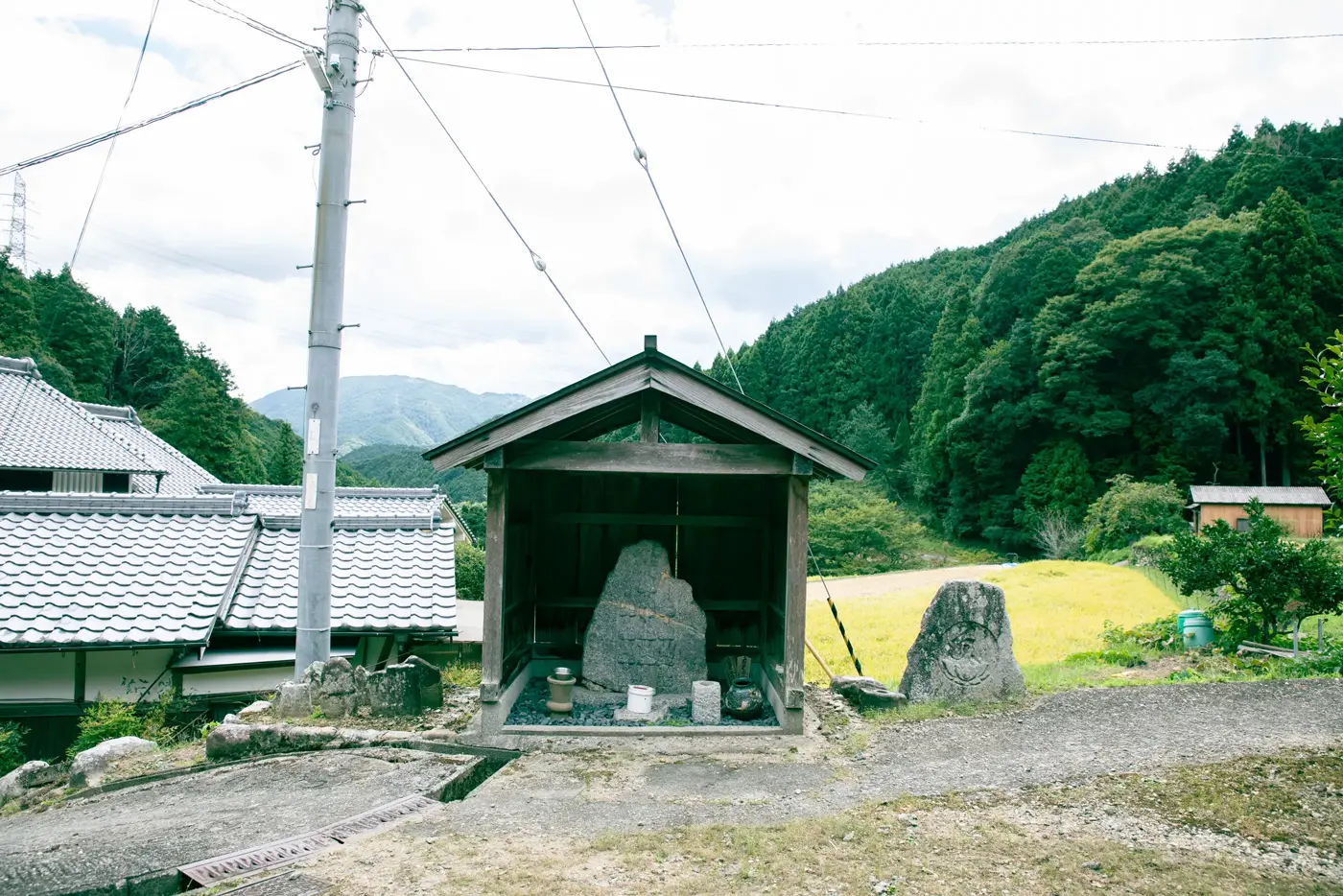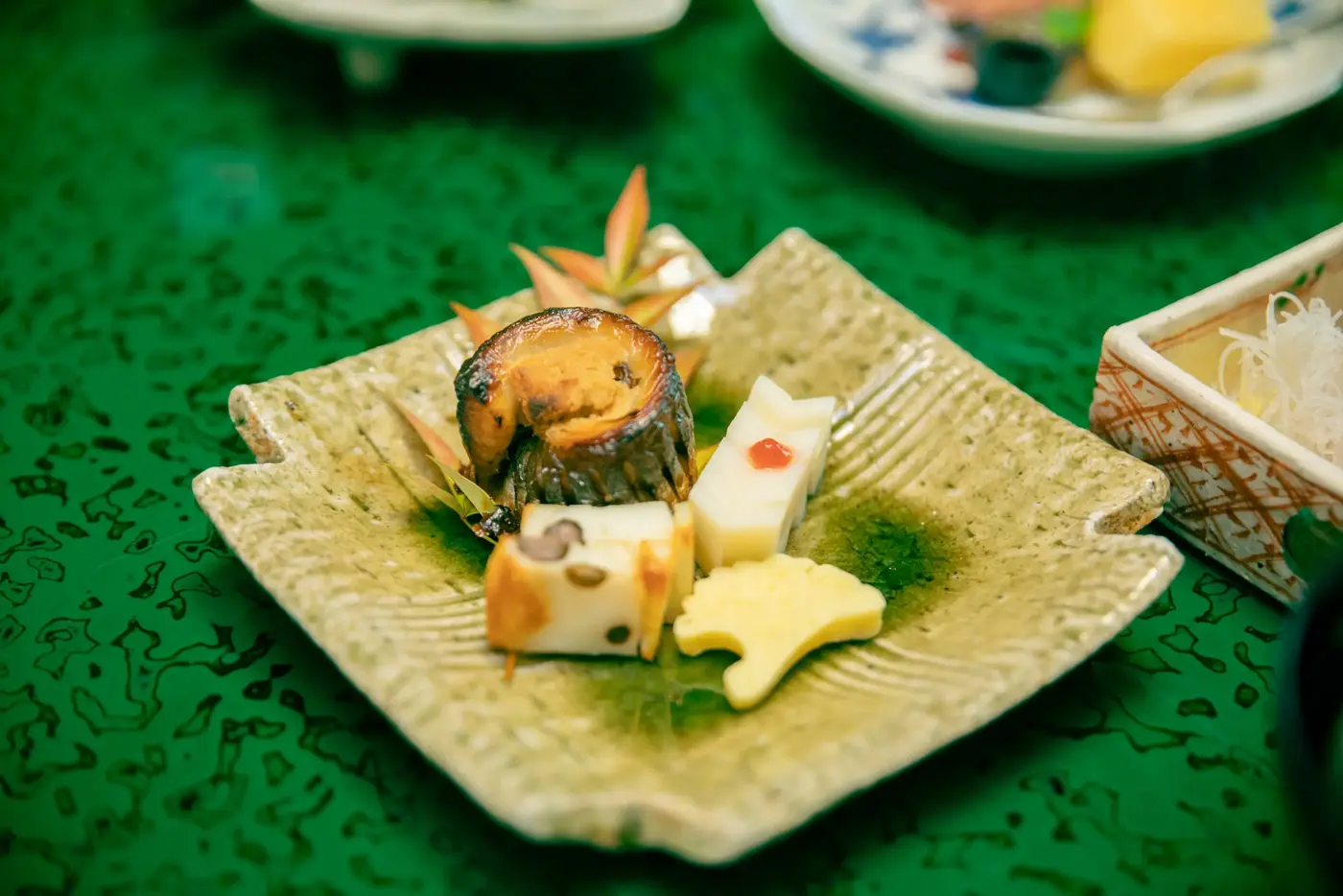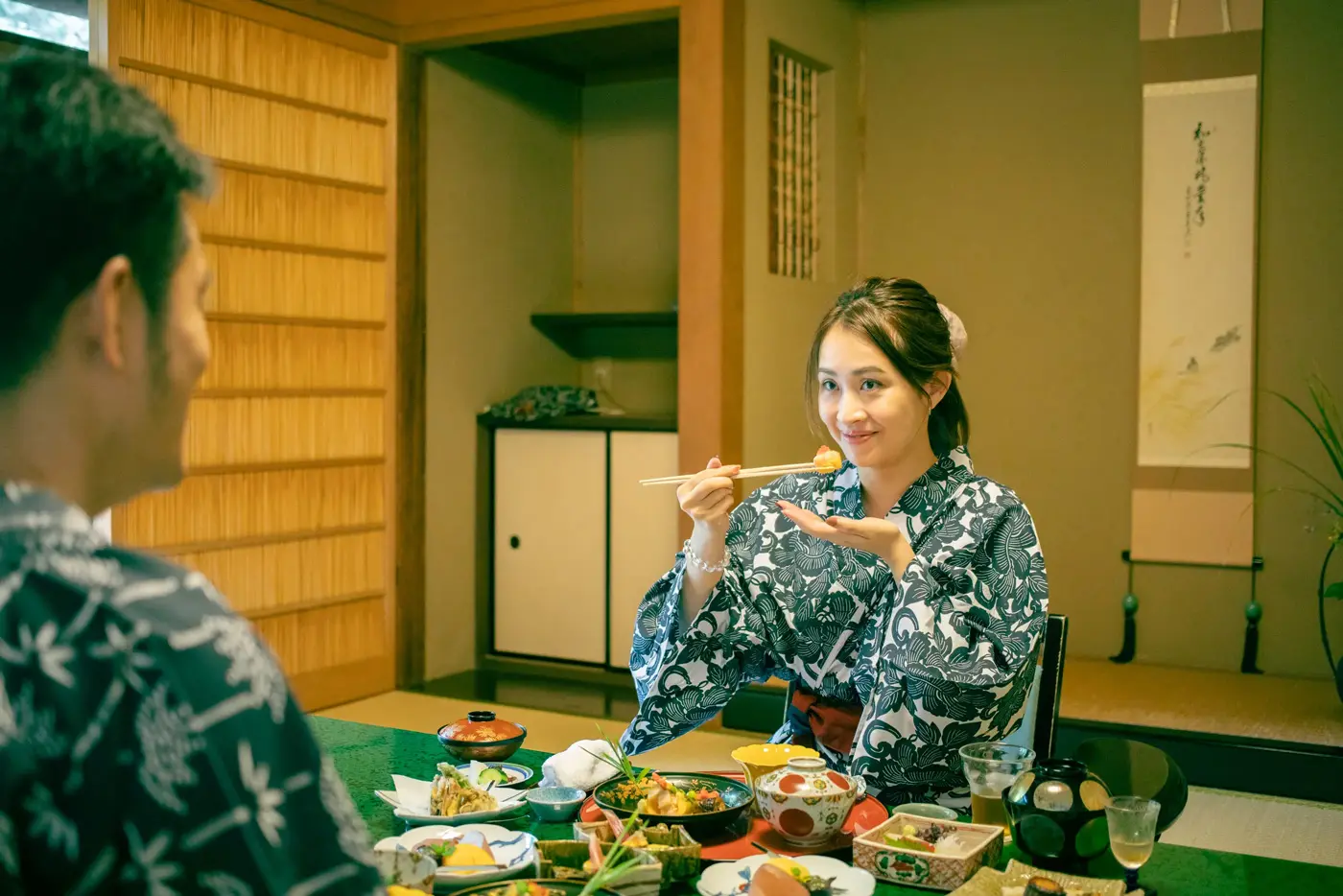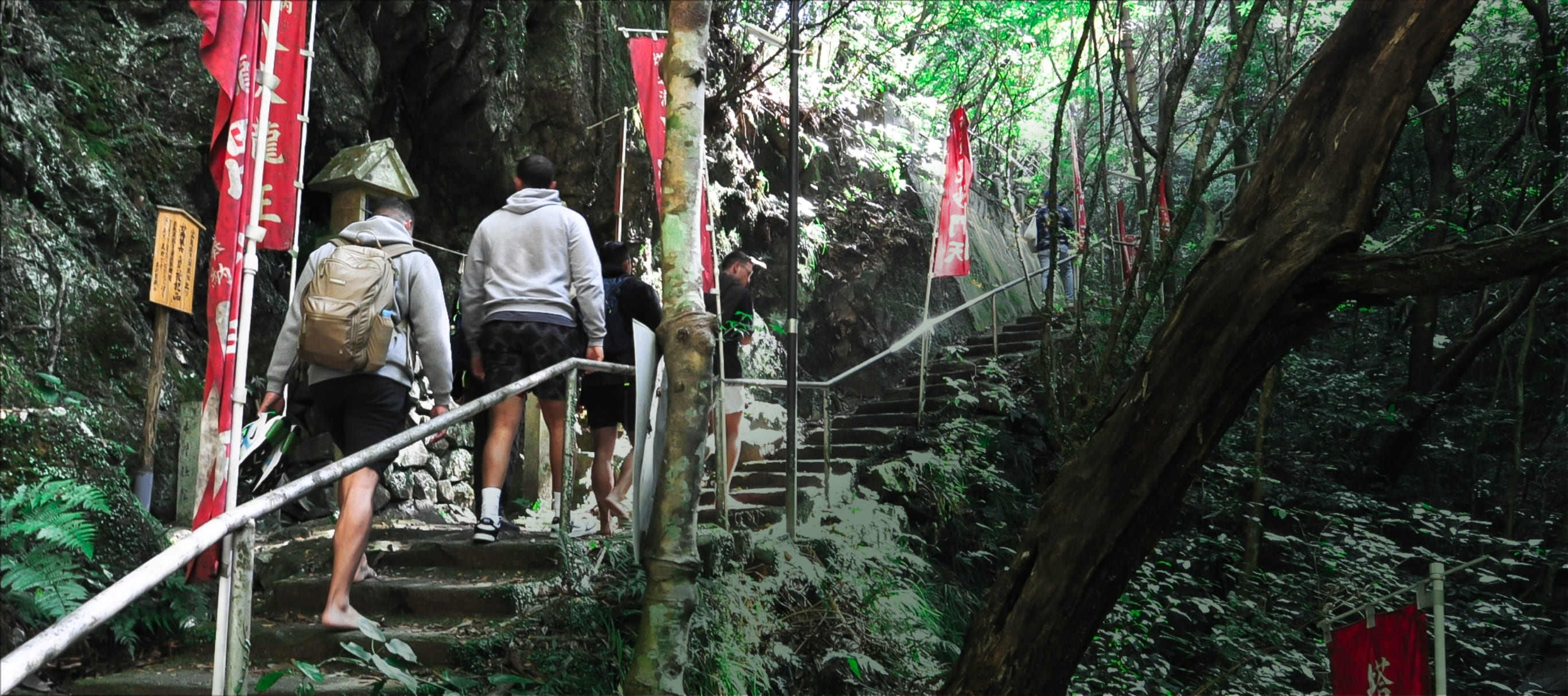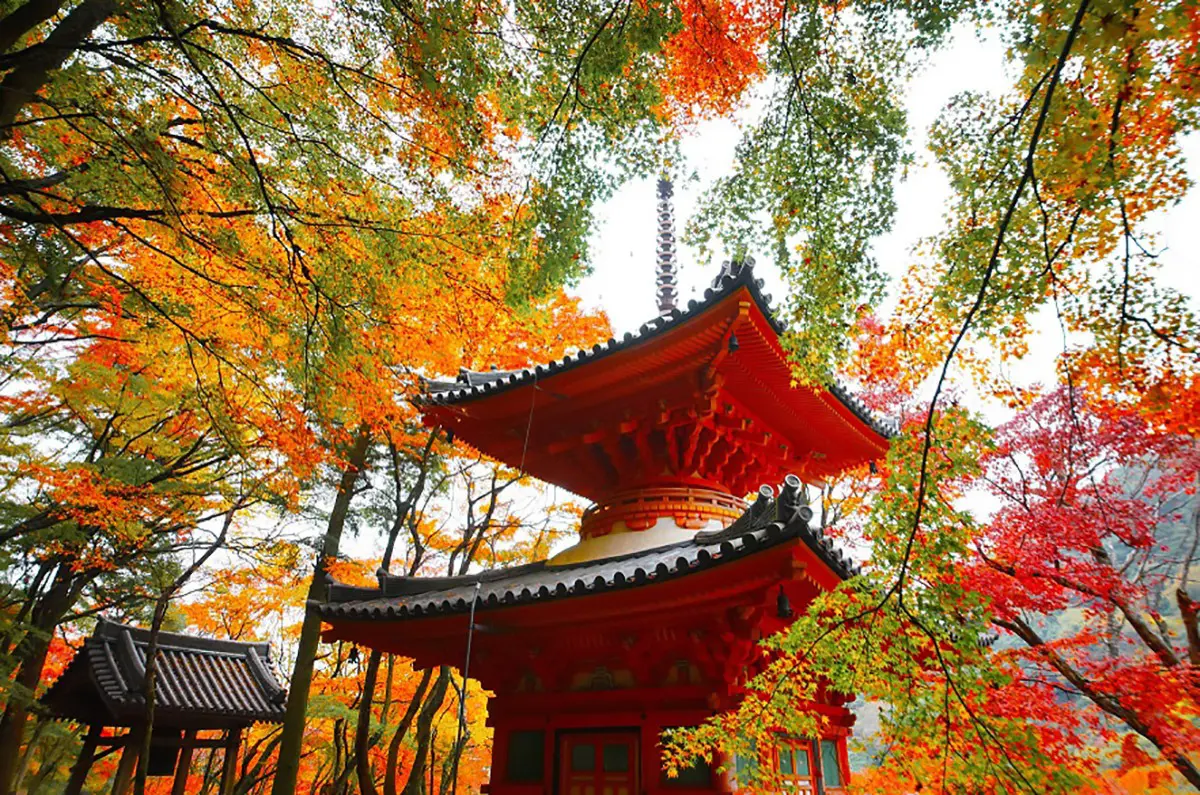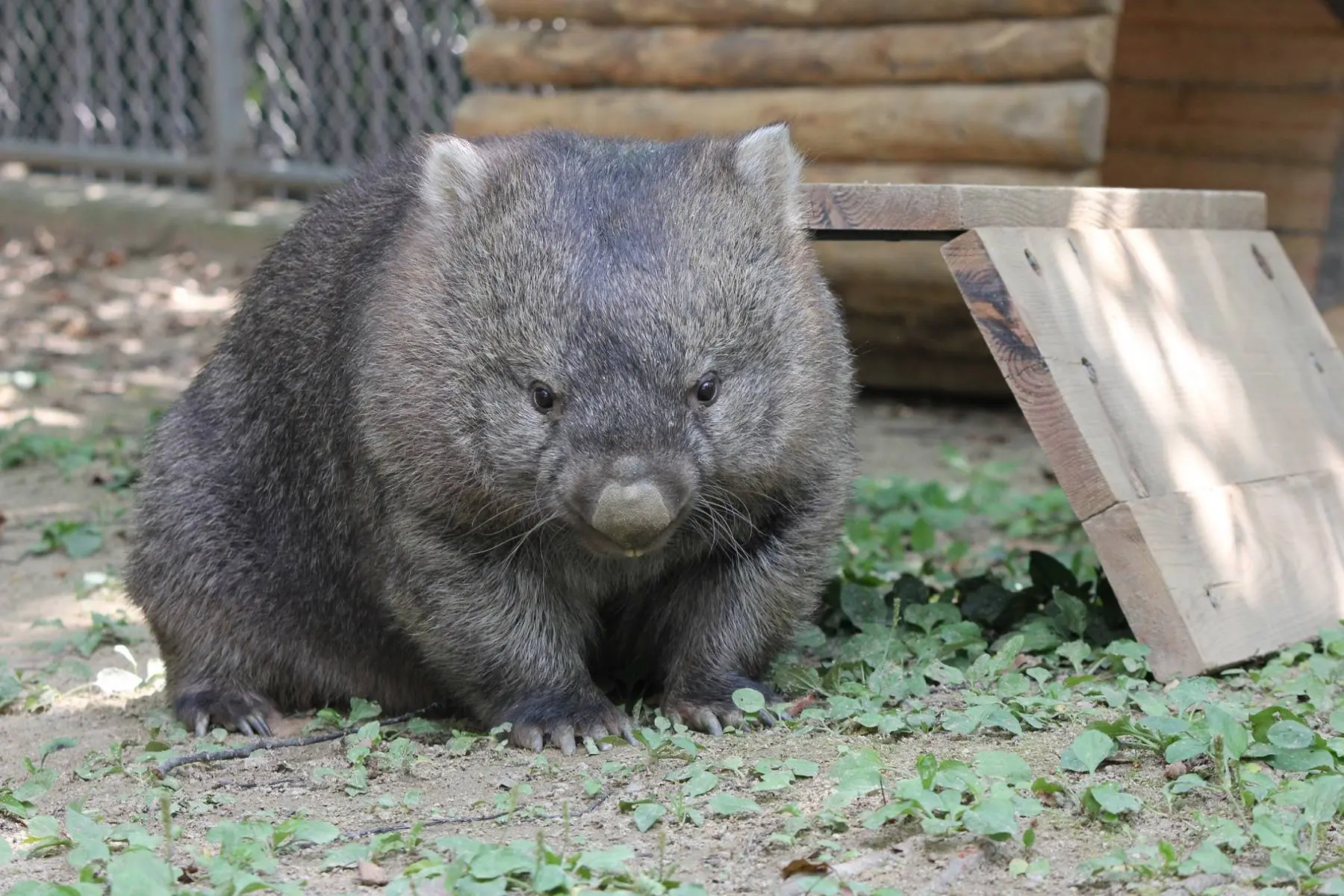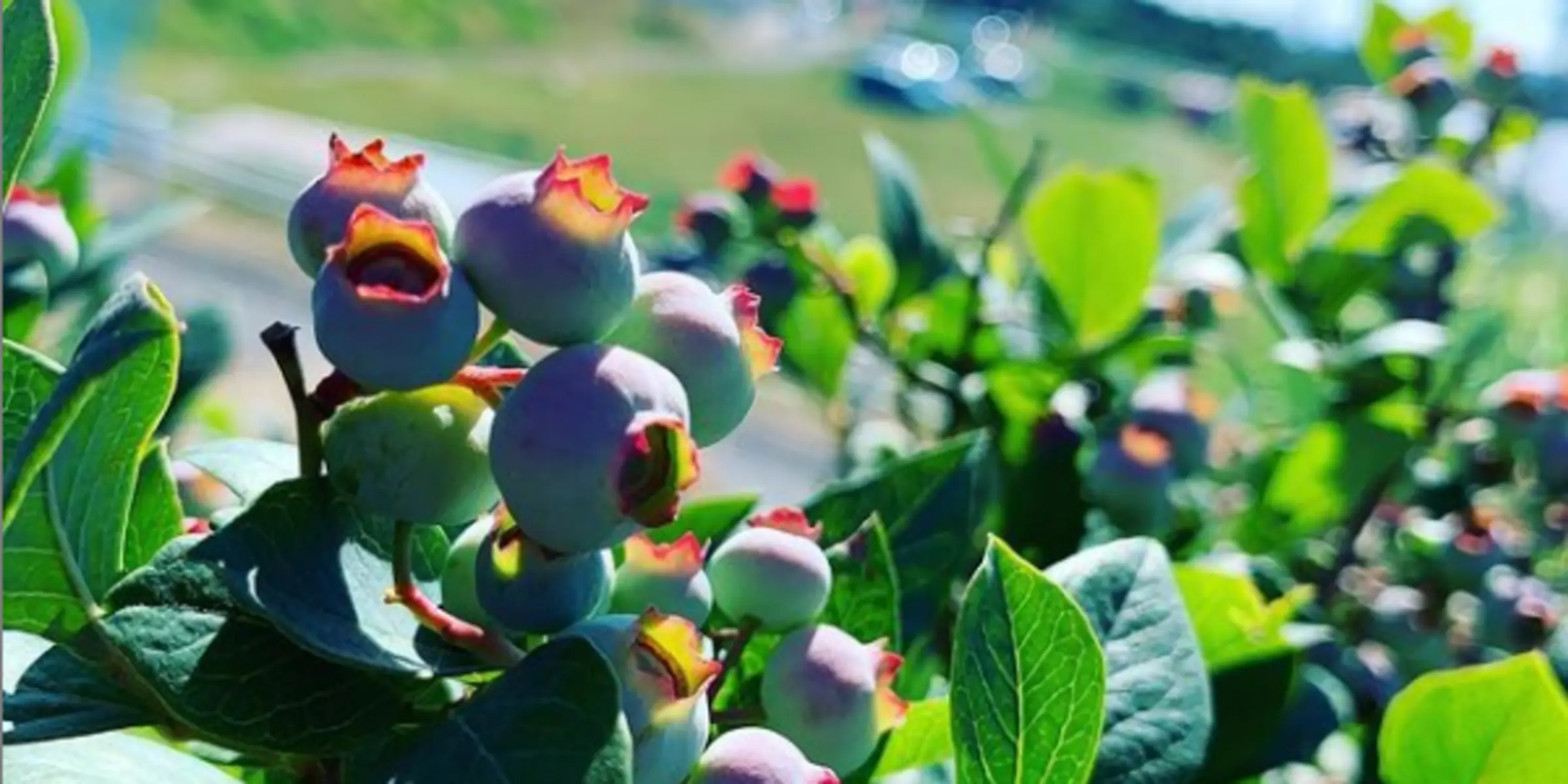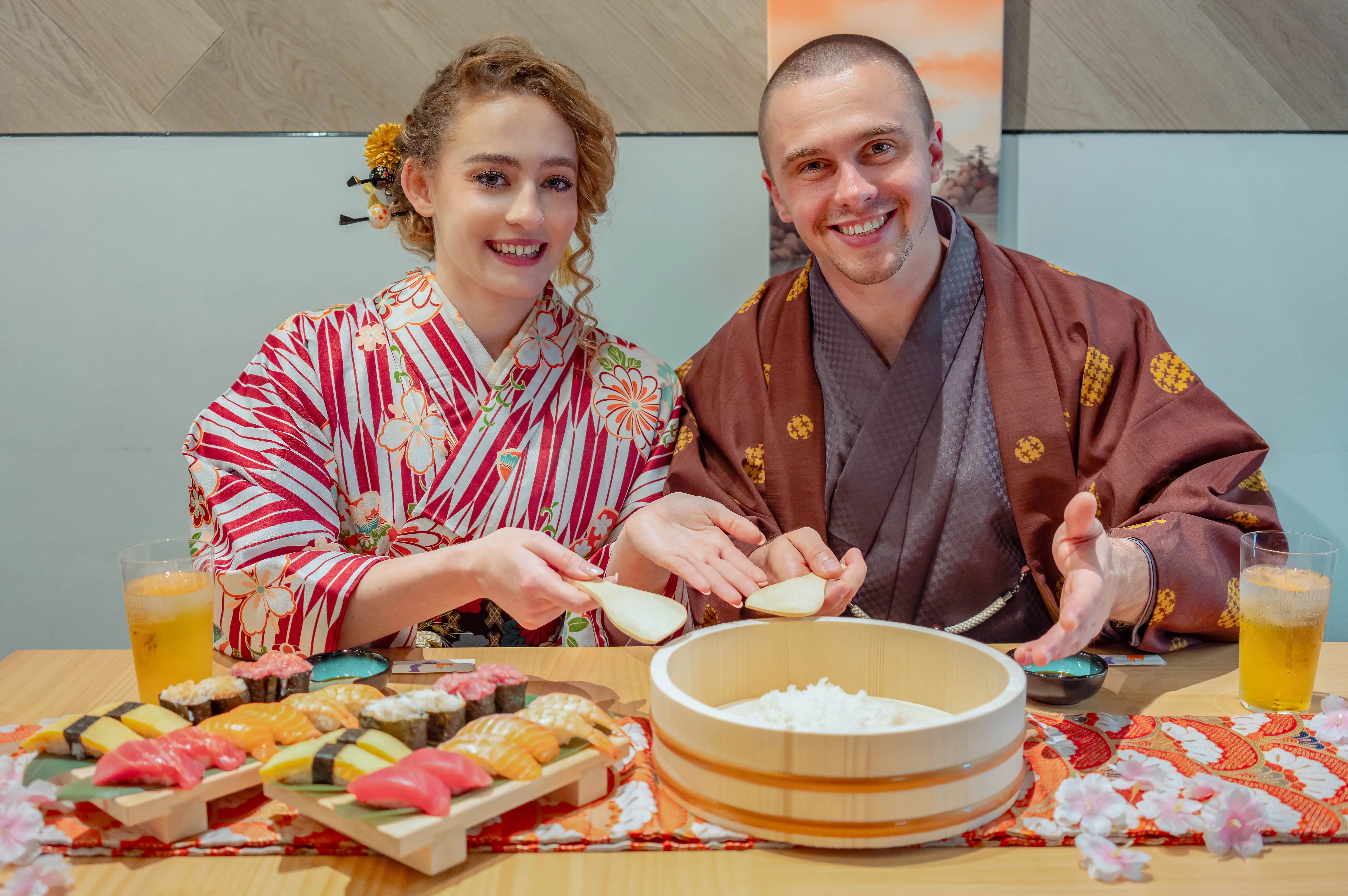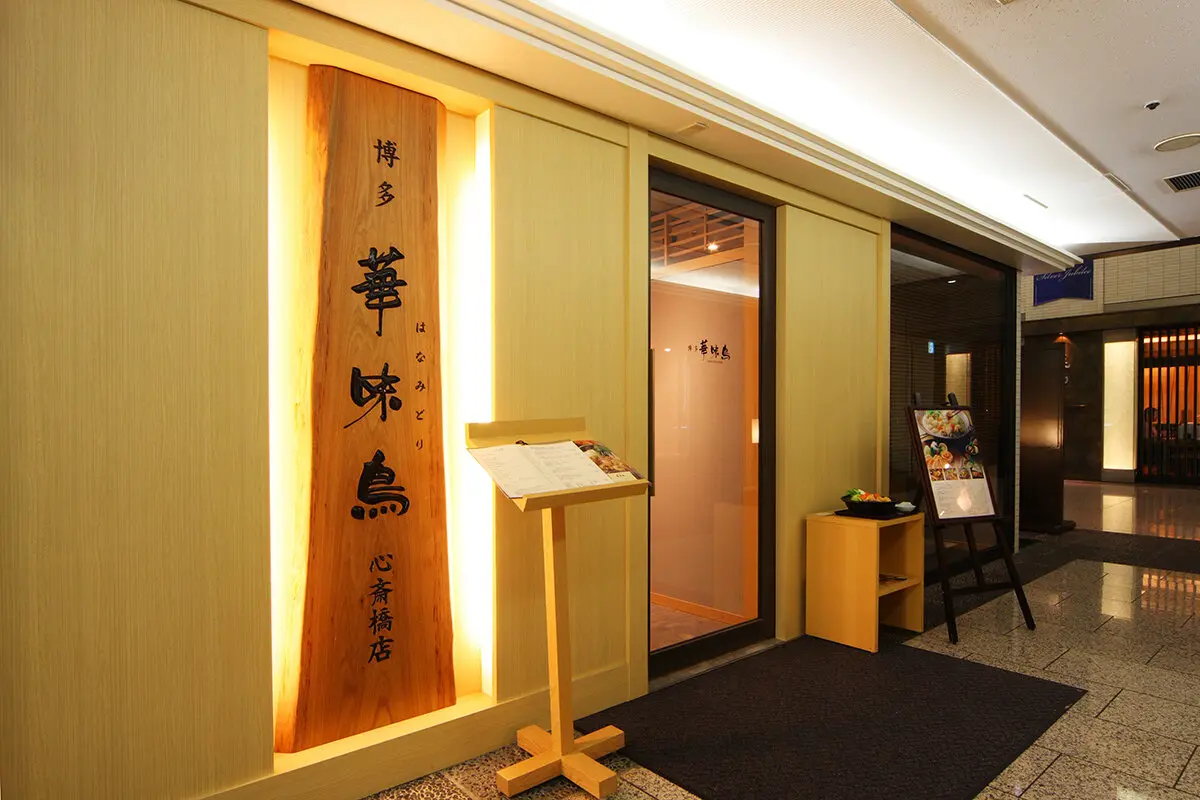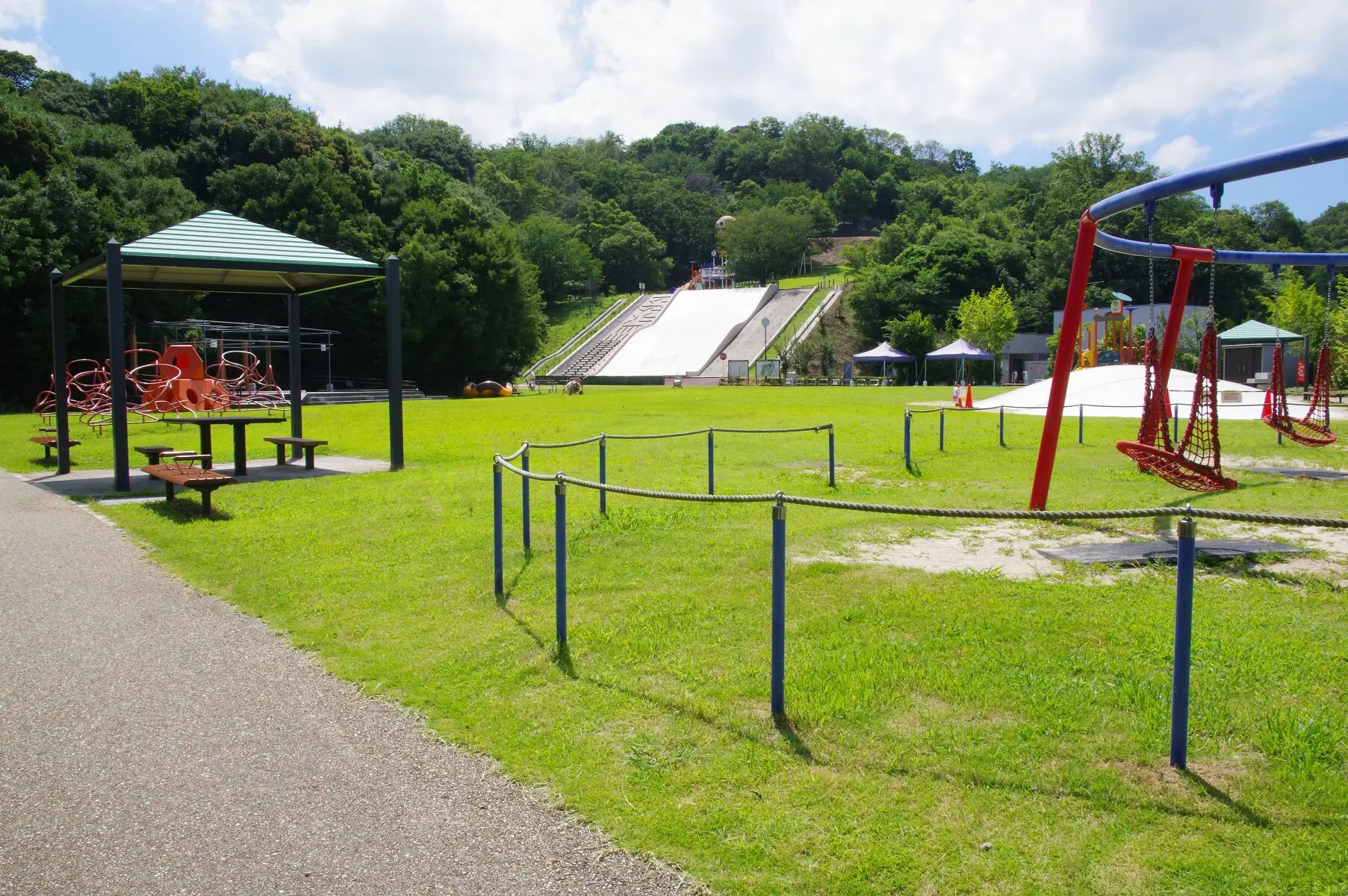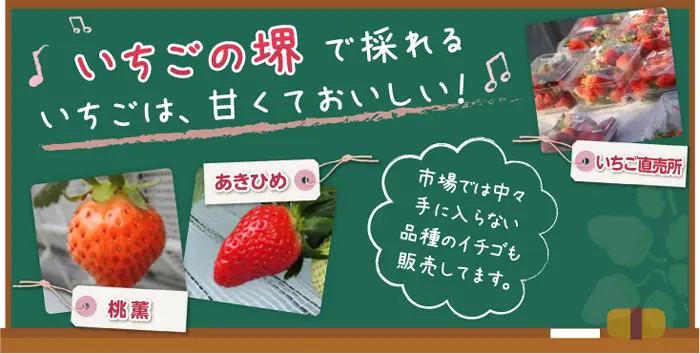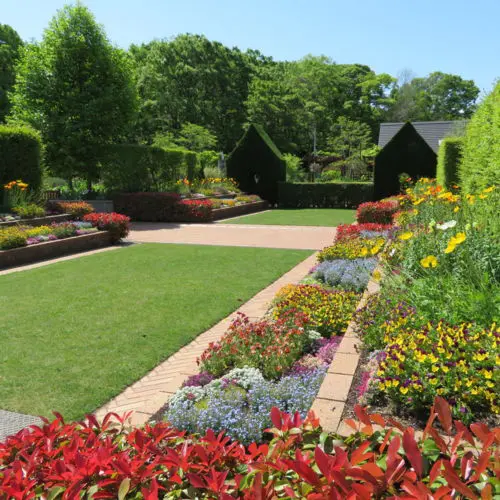The Amami and Nagaredani districts of Kawachinagano City are home to beautiful rice terraces and abundant nature. This time, we'll take a stroll with camera in hand through this little-known satoyama area on the border between Osaka and Wakayama prefectures. For lunch, we'll enjoy a course meal made with plenty of seasonal ingredients at the long-established inn Nanten-en. We'll then finish off with a relaxing soak in the hot springs. Rachel and her husband, originally from Hong Kong, went on a stroll to spend some luxurious time soothing both body and mind.
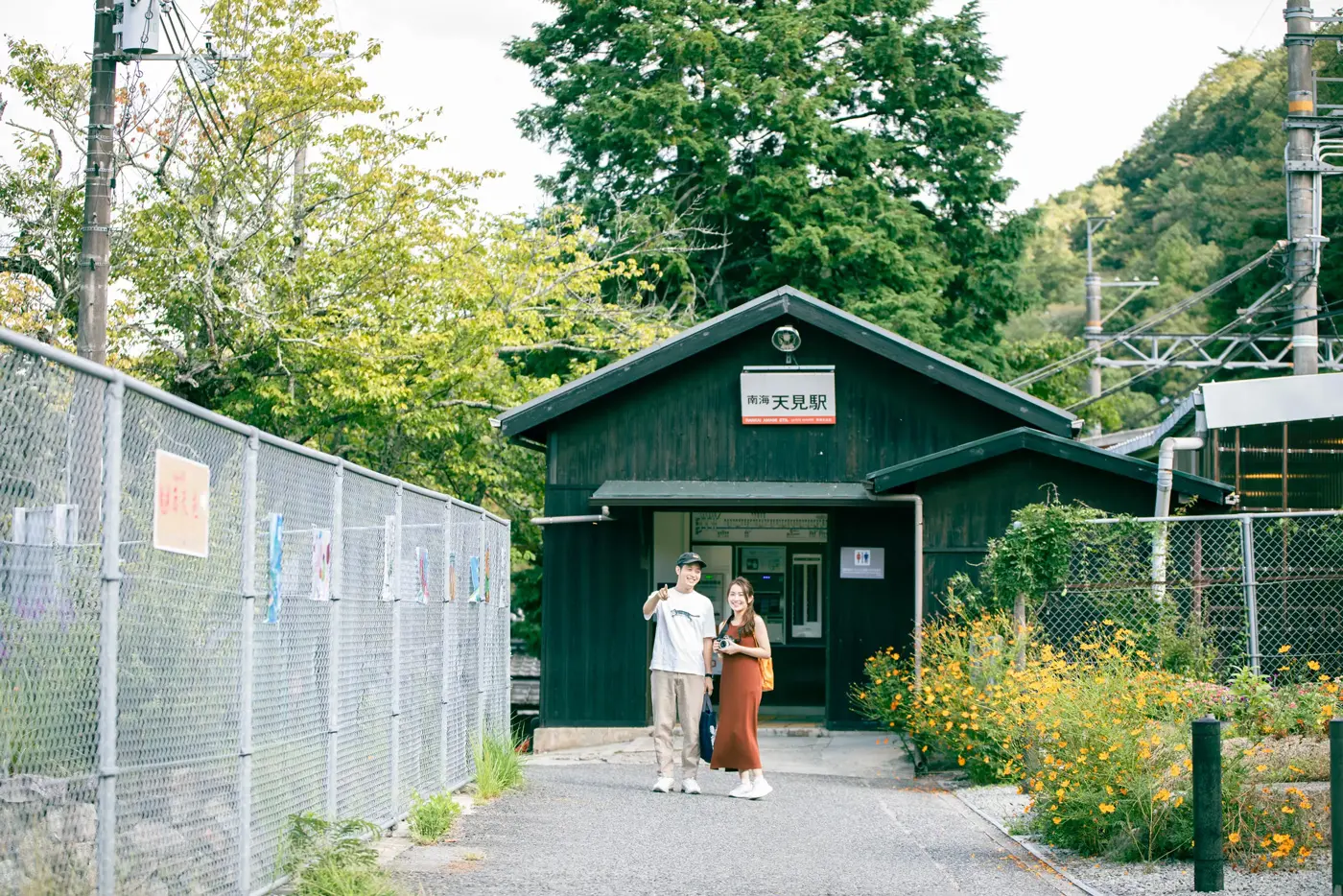
Guide


Takuma, who is originally from Minoh, Osaka Prefecture, is also visiting Kawachinagano for the first time. "Amami Station is smaller and more charming than I imagined. I'm looking forward to exploring!" he said, looking forward to his walk through the countryside.
Take a break from your daily routine and embark on a tour of the Satoyama countryside, starting from a small station building.
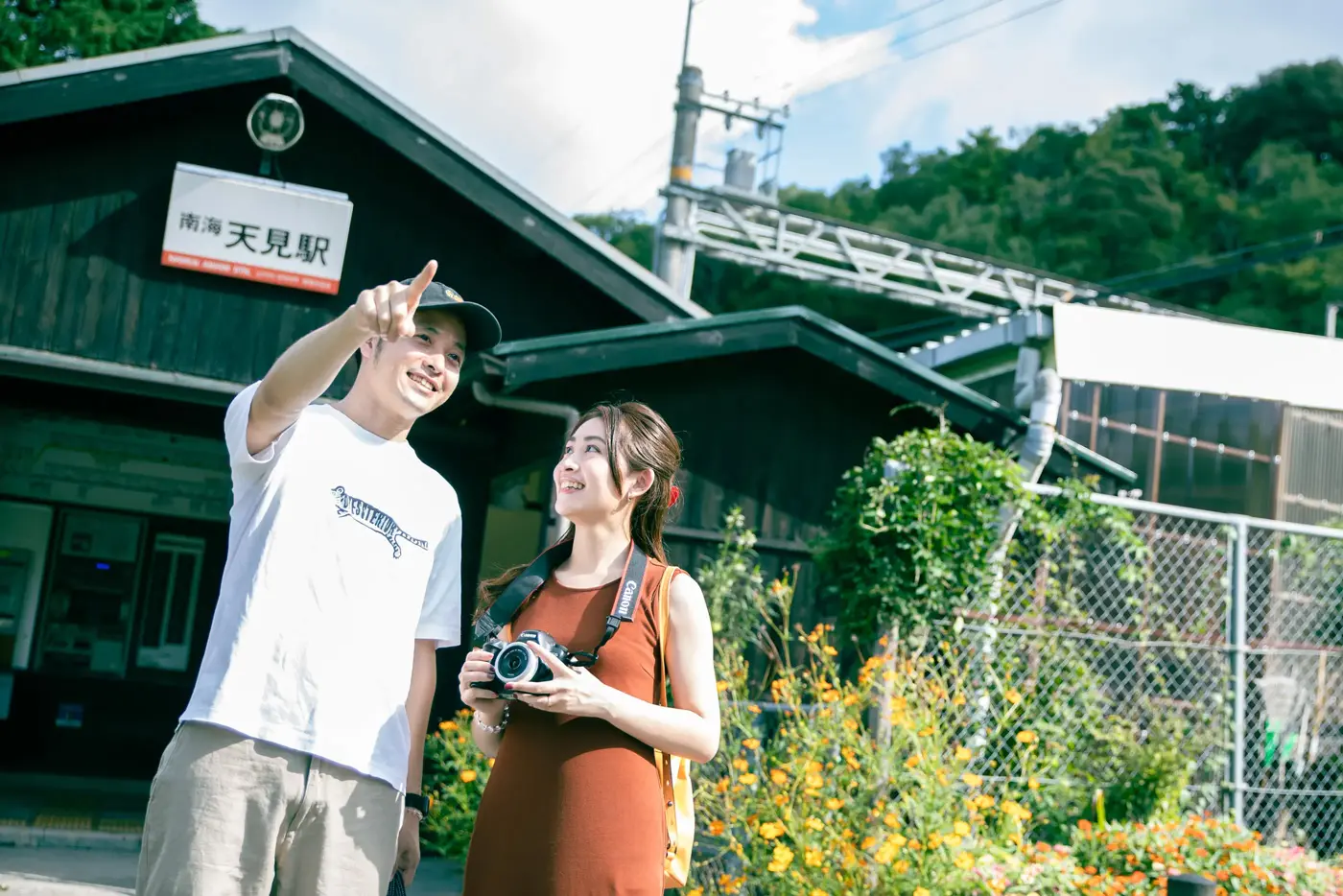
On a clear, sunny day in early autumn, the air begins to feel fresh. When you get off at Amami Station on the Nankai Electric Railway, you'll see a small, charming wooden station building. Its appearance will get you excited and get you in the mood for a trip.
The Amami district, with its beautiful satoyama woodlands, is a popular area not only for walking but also for cycling. In front of the station, there is a map showing recommended walking routes. This time, we started walking immediately, aiming for two of the many walking spots: Hachiman Shrine and the Stone Thirteen Buddhas.
Walking from the station, past cosmos flowers and fields, you will arrive at an intersection with a sign that reads "Deai no Tsuji." At first glance, it may seem like an ordinary intersection, but it is actually a place with a deep history.
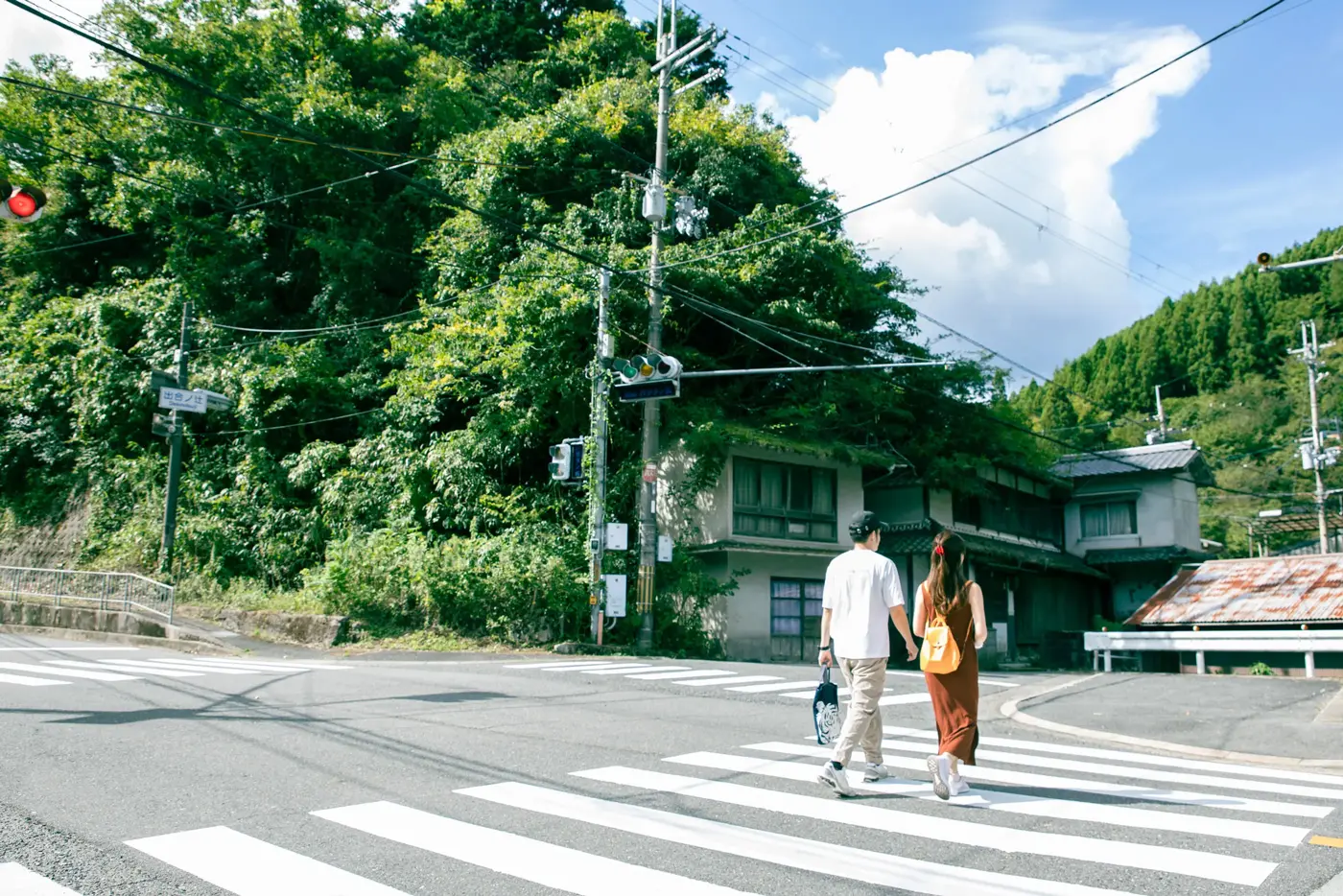
It is said to be the site of the ancient battlefield where the Battle of Amami took place in 1333 between the forces of Emperor Godaigo's general, Kusunoki Masashige, and the Kamakura Shogunate. You cannot enter the area, but it is said that in the lush green area on the left there is a graveyard where the samurai who died in the battle were buried. The Amami area is a place where a scene from the past lurks at an ordinary intersection. Learning the story will pique your curiosity.
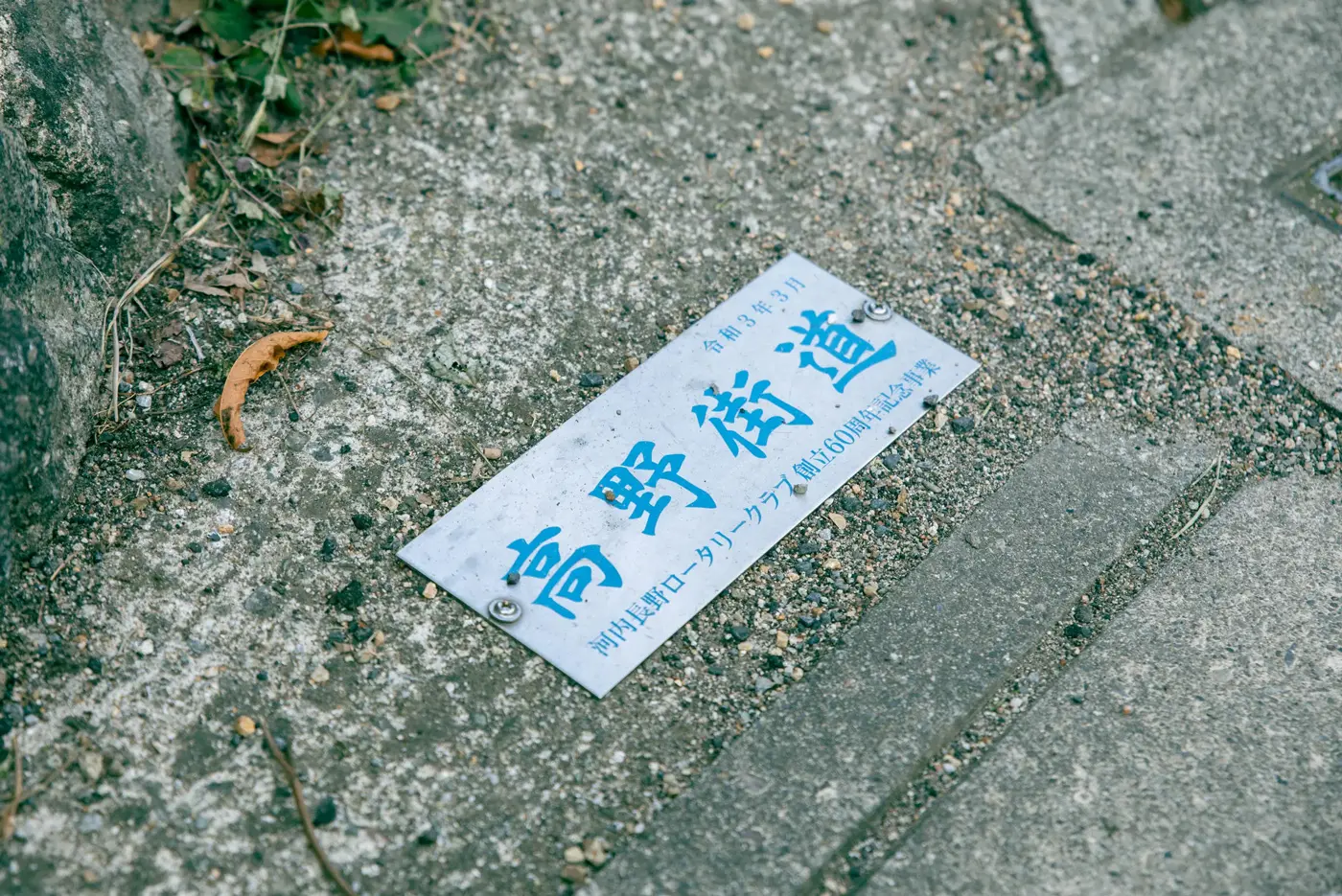
As you cross Deai-no-Tsuji and continue walking, you will see the words "Koya Koyakaido" written on the roadside. Yes, this is also the pilgrimage route that Kobo Daishi, or Kukai, walked on his way to Mount Koya. Take a snap of the plaque that gives you a sense of history.
During the Nanboku-cho period, the chief priest of Hachiman Shrine opened a hot spring in the Amami area as a therapeutic hot spring resort for people suffering from illness. The therapeutic hot spring resort was destroyed in a fire in the 1700s, but it was a popular hot spring resort until then. It is said that it was here in Amami Onsen that Kobo Daishi, also known as Kukai, soothed his fatigue on his way to Mount Koya.
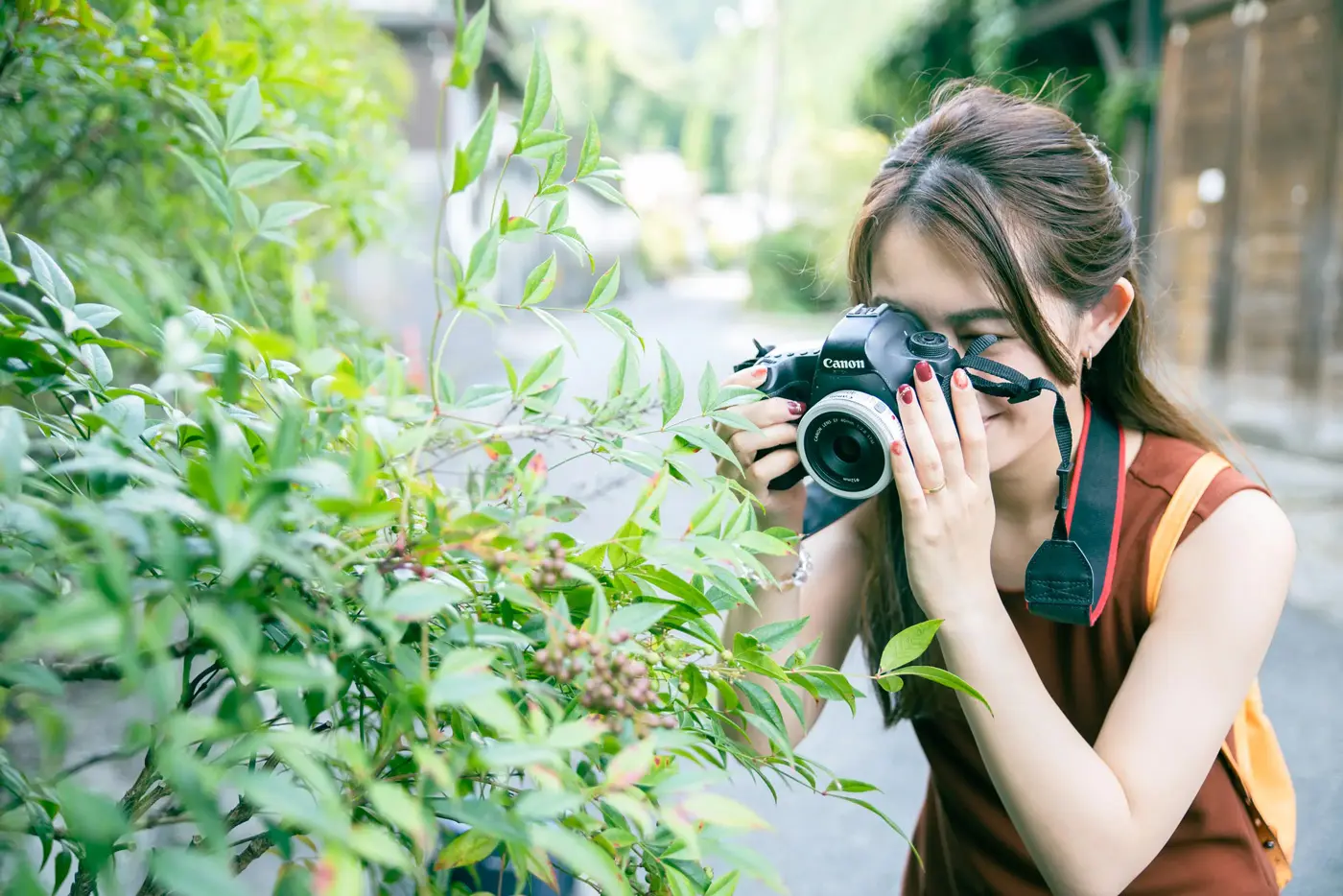
Another thing that is essential to talking about the Amami region is the nandina. If you look closely while walking, you will see nandina trees everywhere! The Amami region was once a major producer of nandina and was known as the "village of nandina." There are apparently no producers who specialize in nandina production these days, but nandina trees grow everywhere, telling the story of the area's history. Standing in front of the nandina trees, which are not usually seen in the city, Rachel exclaims, "There are so many!" as she takes a picture.
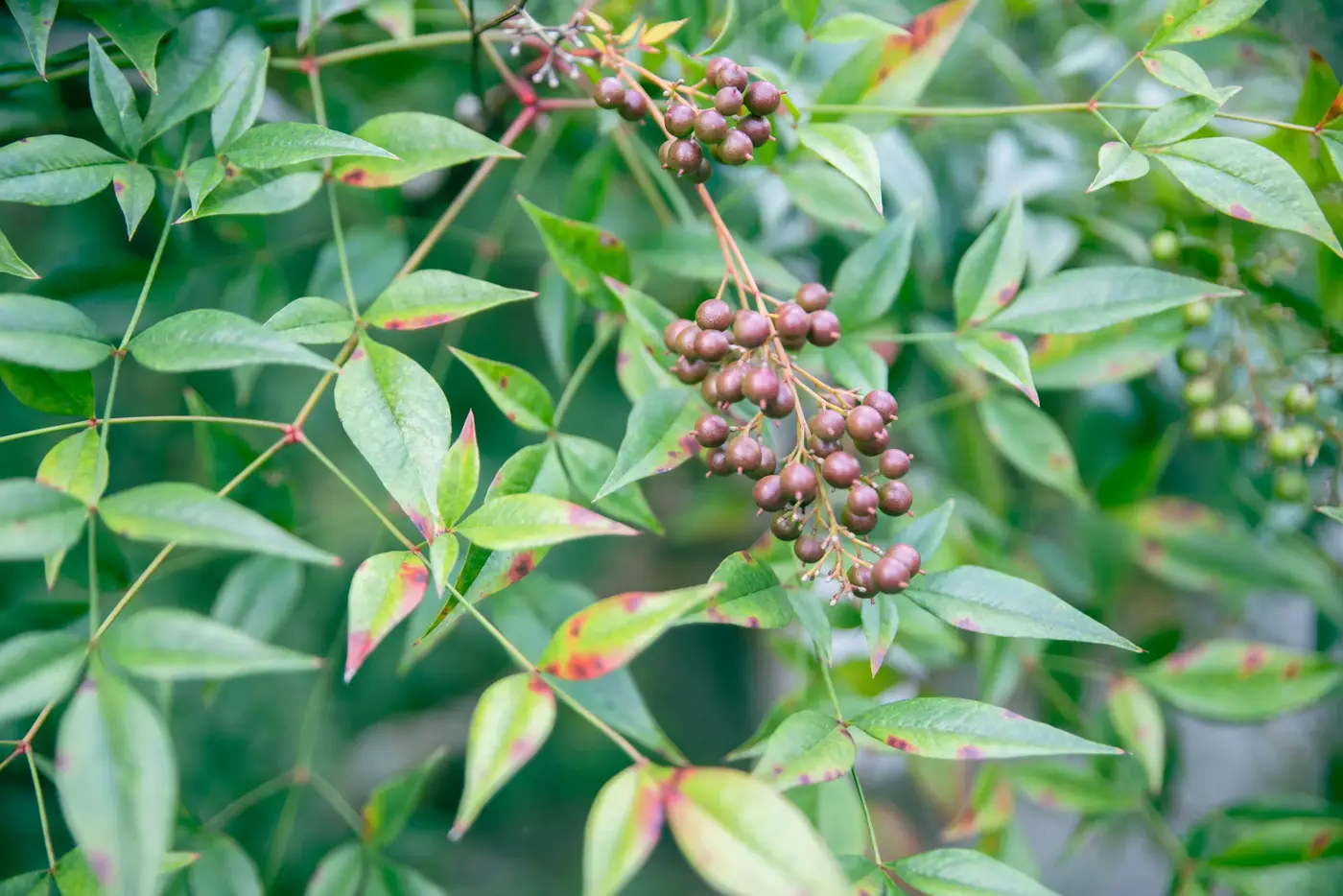
Nandina trees were not the only things coloring the Satoyama. Here and there, cluster amaryllis flowers were blooming, and persimmon and chestnut trees were bearing bountiful harvests.
Just a 30-minute walk from the station, you'll see a spectacular rural mountain landscape with a gradation of green right before your eyes! "Minoh has a lot of nature, but this vast landscape is nice and different to the natural scenery you usually see. You can't find scenery like this in my hometown of Hong Kong, and it's rare to get the chance to see rice fields. It really makes you realize you're living in a foreign country," says Rachel.
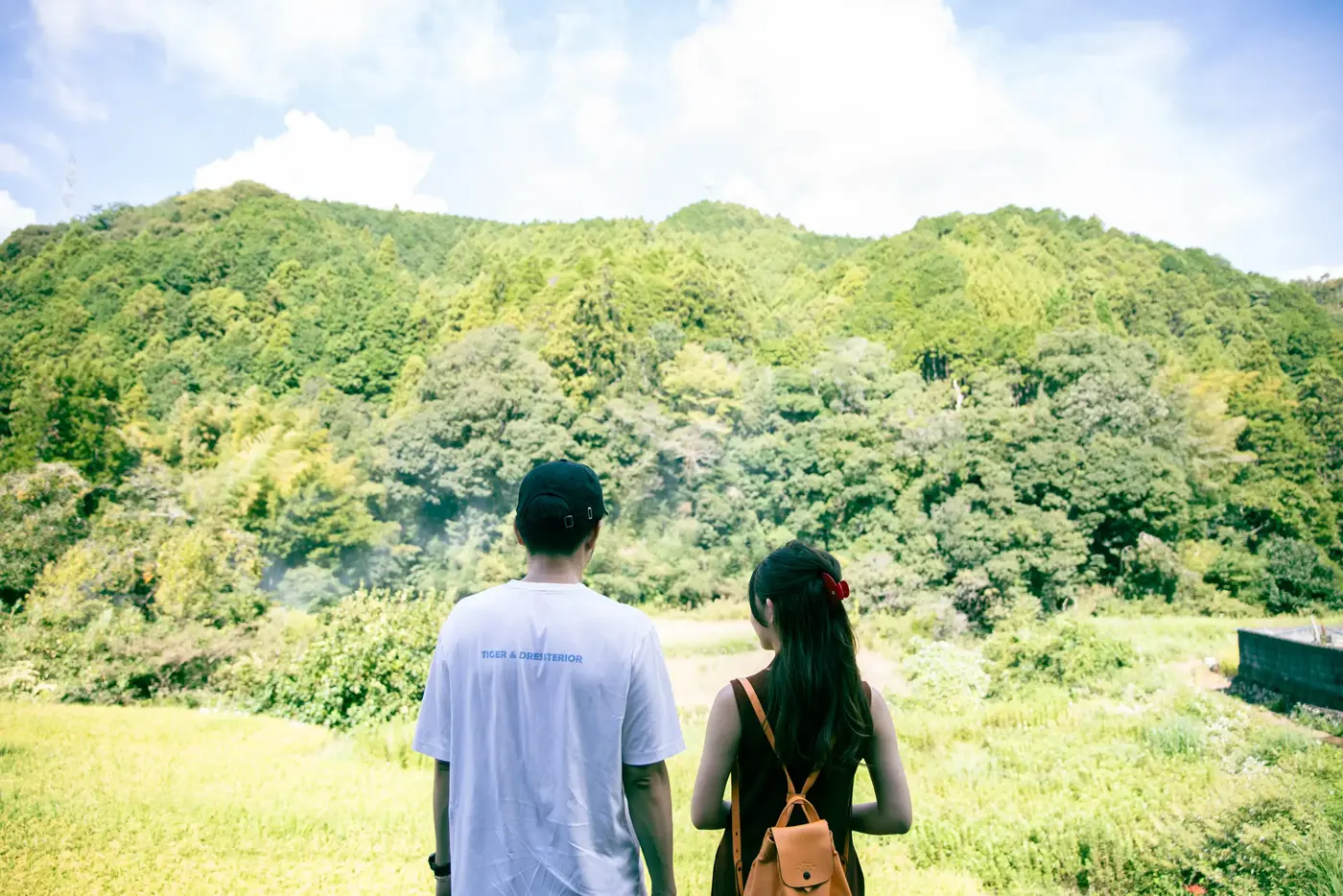

As I walked, I came across a variety of plants, including red spider lilies, cosmos, persimmons, and chestnut trees. I don't usually get to be surrounded by such a wide variety of plants in my daily life, so it was truly refreshing! The scenery unique to this area is well worth the walk.
Head to Hachiman Shrine to feel the bond with the local people.

As we continued our walk, we saw a red bridge in the distance! We had finally arrived at our first destination, Hachiman Shrine.

After crossing the bridge and walking along the path, we discovered the worship hall.
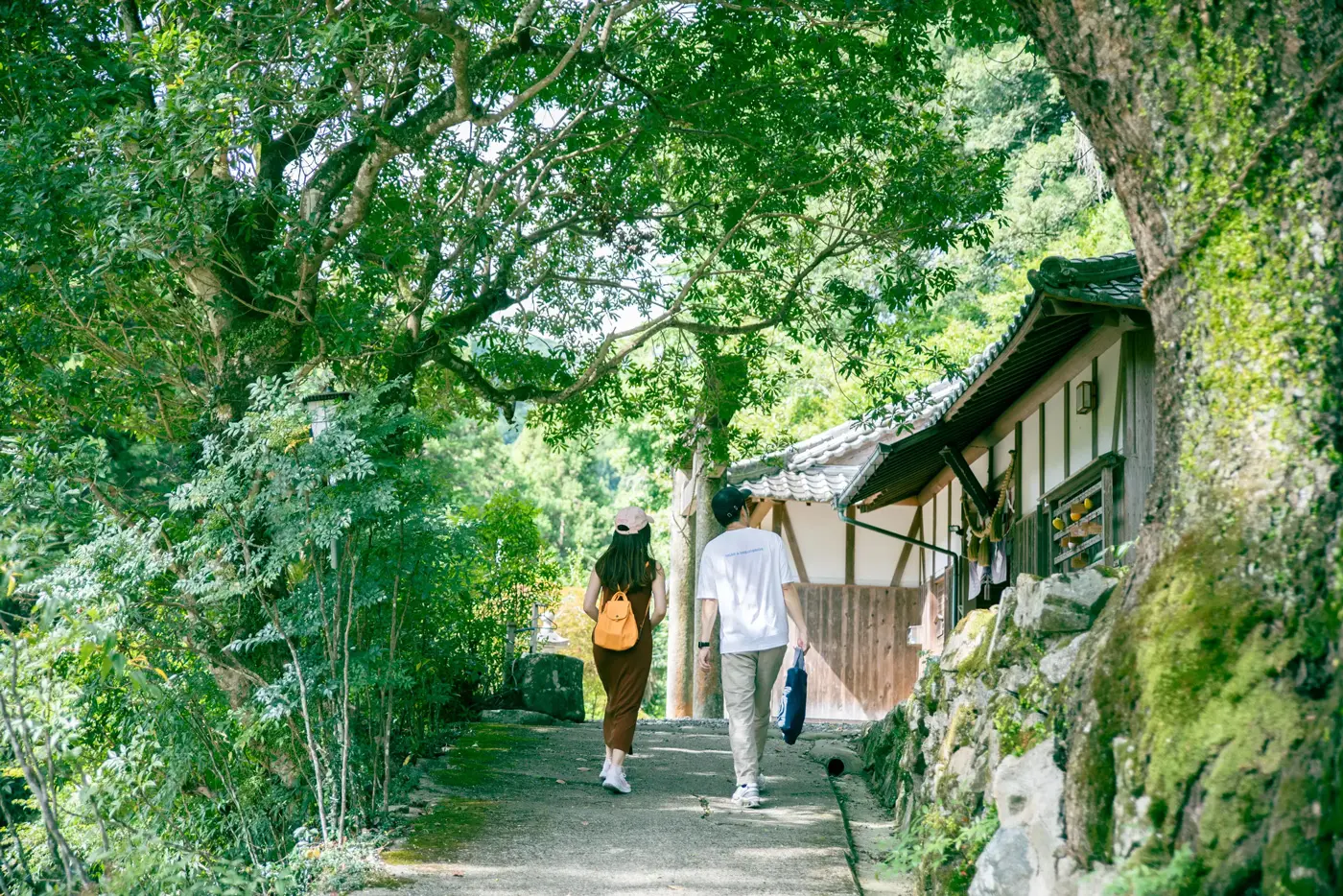
Hachiman Shrine is a historic shrine that was founded in 1039 as a branch shrine of Iwashimizu Hachiman Shrine. This shrine stands alone in the countryside, and every year around January 6th, a ritual called "Kanjo Nawakake" is held, in which a thick shimenawa rope is draped across the Nagaretani River that flows in front of the shrine. The shimenawa rope used in the ritual is apparently woven together by parishioners from the Nagaredani and Shimotenmi districts, who bring new straw. This story, which conveys the deep bond that connects the local people with the shrine and rituals, gives a glimpse into the life of this region.
Leaving Hachiman Shrine behind, we continued our walk and arrived at the shining rice terraces of Nagaredani.
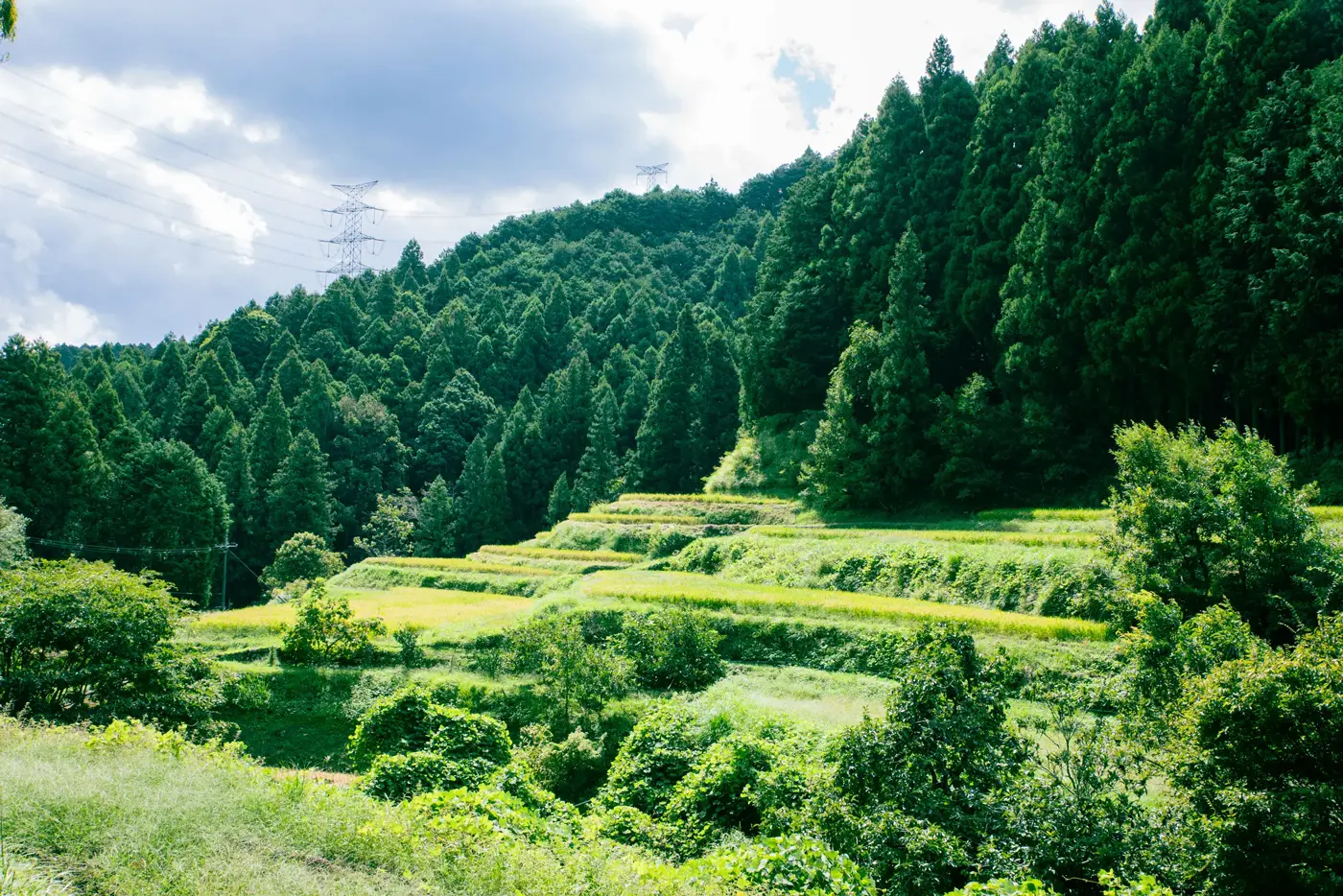
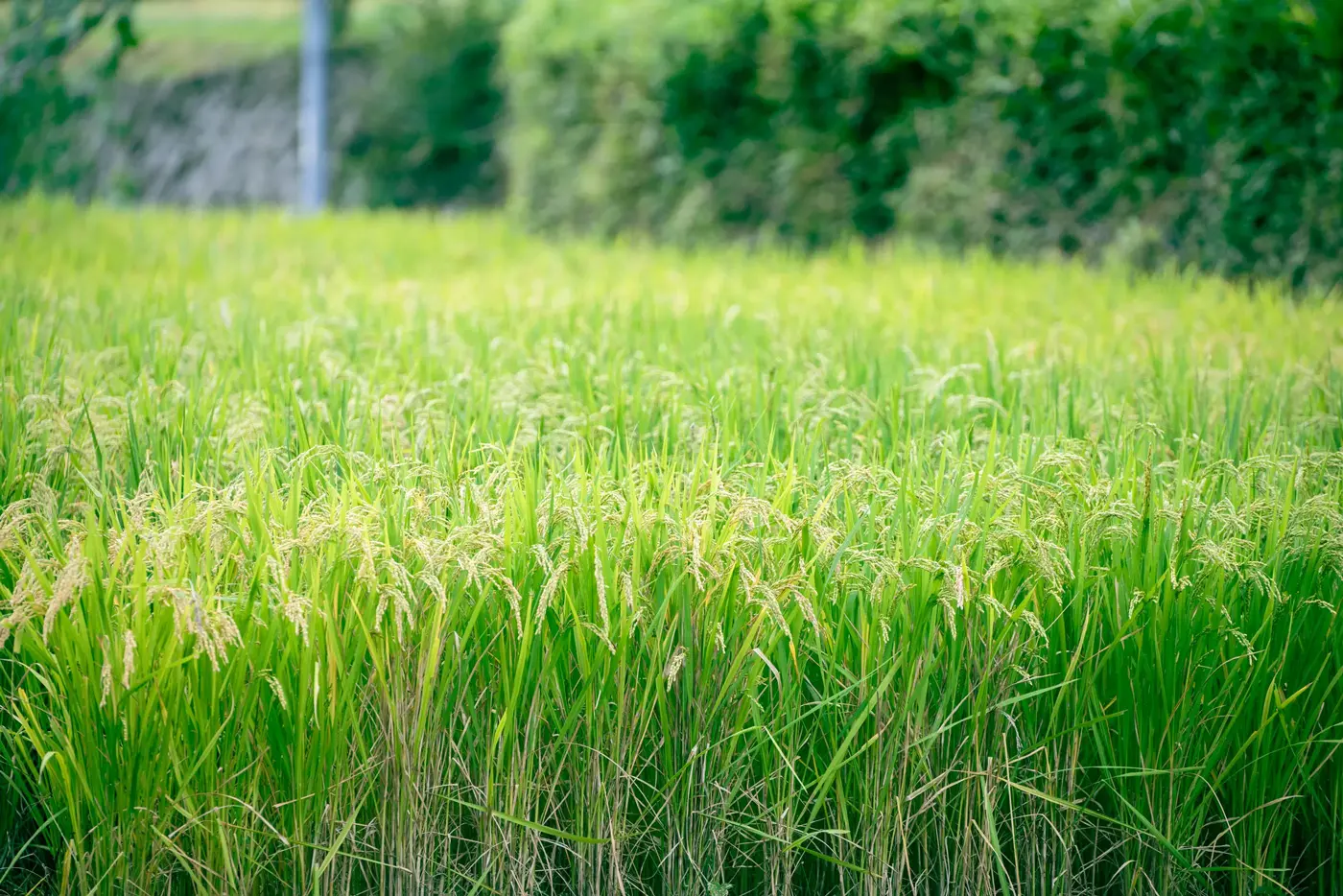
As we got closer, we could see beautiful, ripe rice ears. We walked up the small path close to the rice terraces...
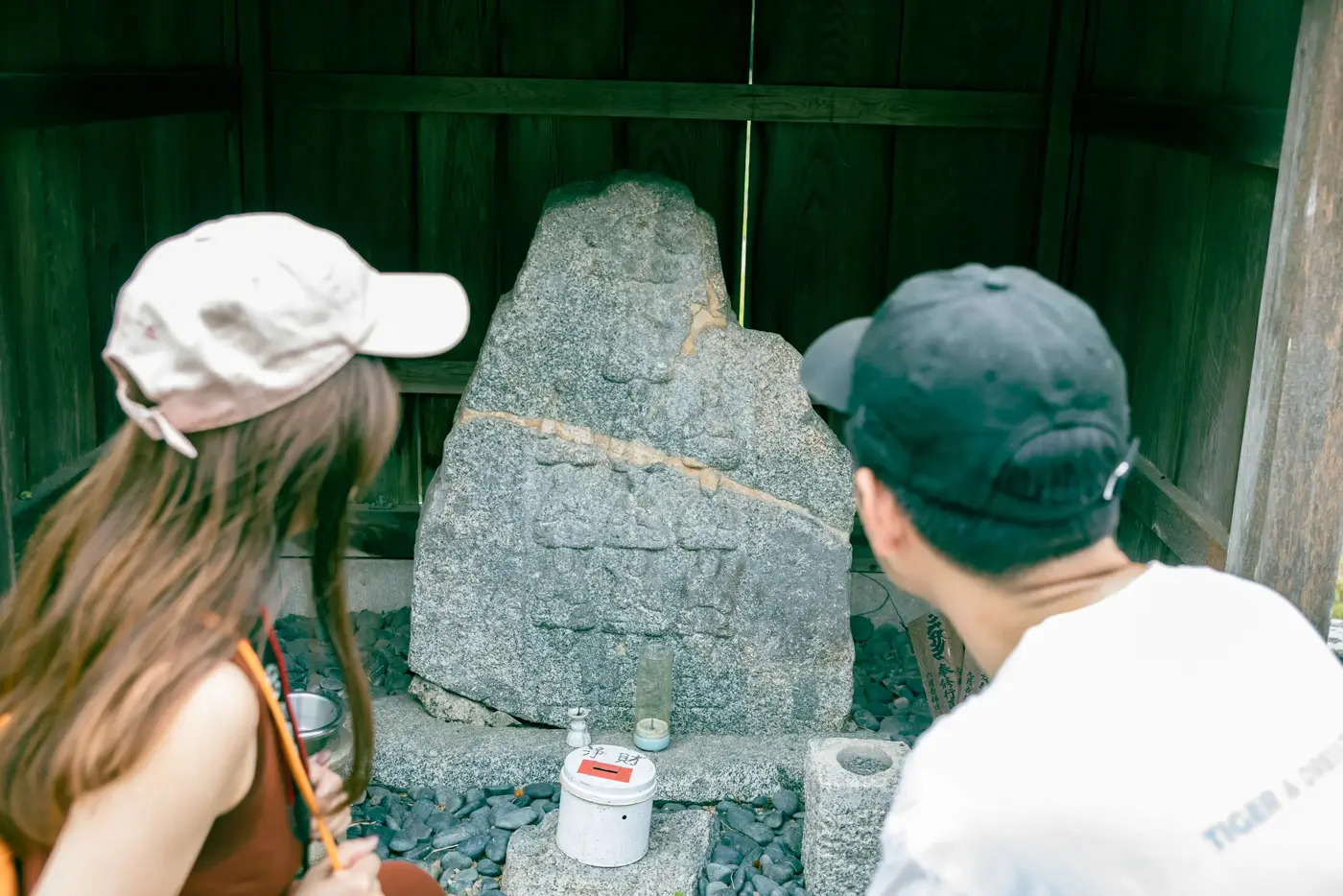
Our second destination was the Thirteen Stone Buddhas, a city-designated cultural property! Upon closer inspection, we discovered that thirteen Buddhas were carved into this stone structure, which is said to be made of granite. Names are engraved on the stone structure, some of which are written in katakana. There is a theory that these are the baptismal names of Christians, and they are considered important resources for the history of Kawachi Christians and local research.

My favorite view I found while walking around was the red bridge over the Nagaretani River. It was a view I liked because it really felt Japanese. The fact that you can reach the shrine by crossing the bridge is fun, it feels like an adventure. I felt like I was receiving the power of nature from the large ginkgo tree nearby.
Visit Nanten-en, a long-established inn designed by architect Tatsuno Kingo
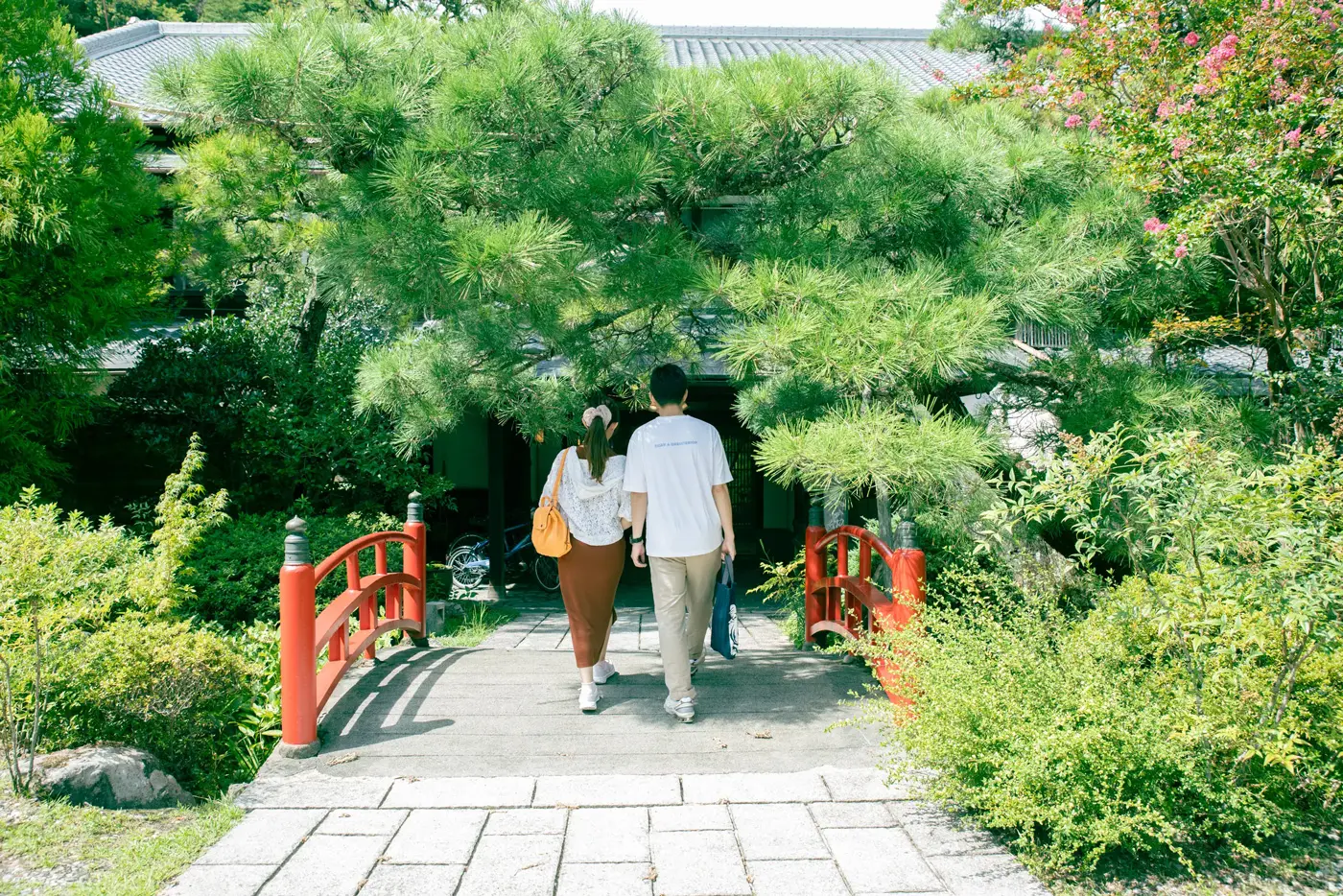
After enjoying a stroll through the Amami and Nagaredani district for about an hour, we returned to Amami Station and went to the long-established inn "Nanten-en." This retro architecture, reminiscent of the Osaka era, was designed by architect Kingo Tatsuno, who is also famous for his work on Nakanoshima Central Public Hall and Tokyo Station.
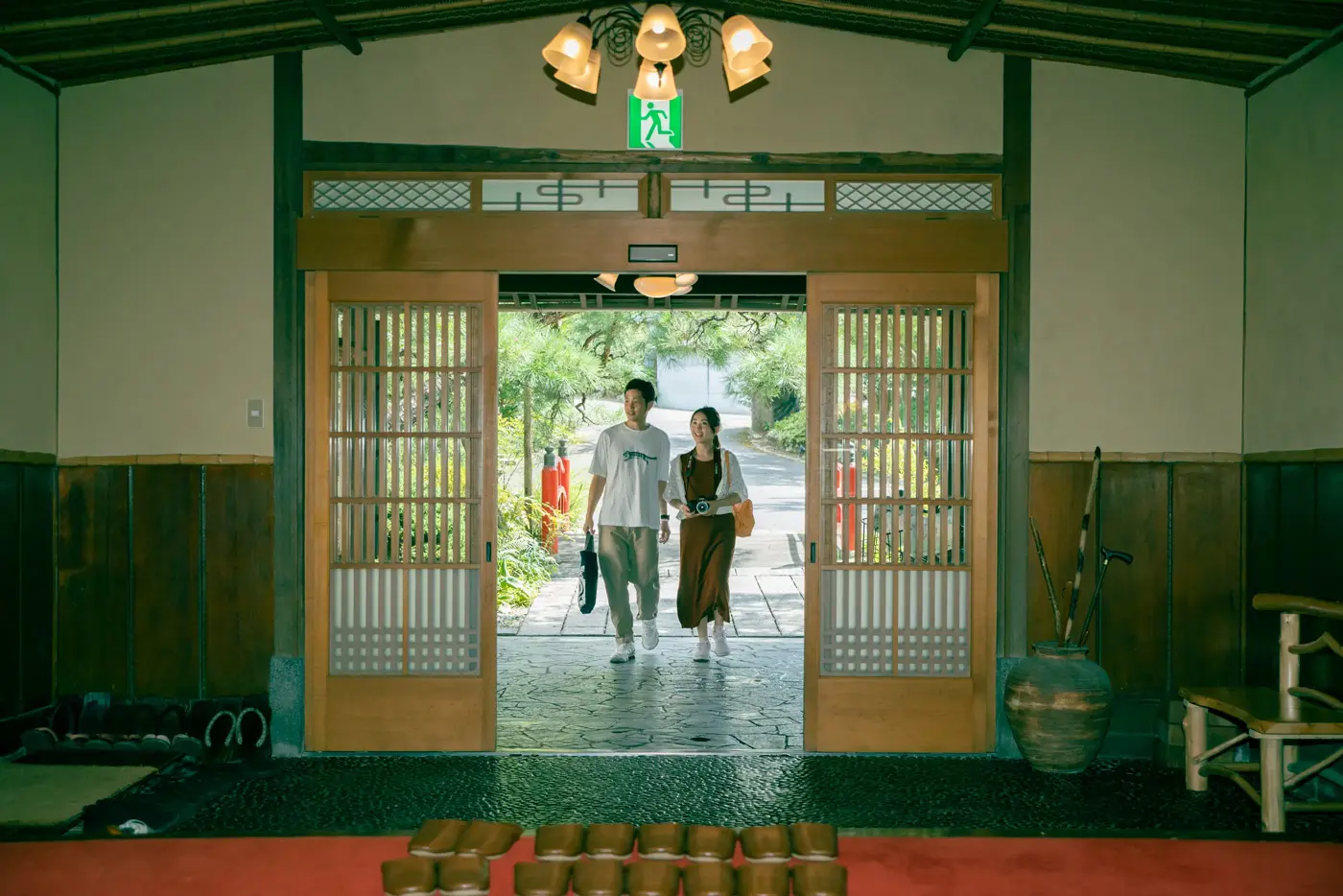
It was built in Sakai City's Ohama Park as an annex to Shioyu, which was constructed in the Taisho era, and was moved to Amami in 1935. After a period of absence following the war, it was re-opened as Nanten-en in 1949. The interior of the sukiya-style building, including the decorations and circular windows, remains unchanged from the time of its construction. It is currently registered as a national tangible cultural property.
Today, we decided to enjoy a day trip plan at Nanten-en, which includes seasonal kaiseki cuisine and hot springs.
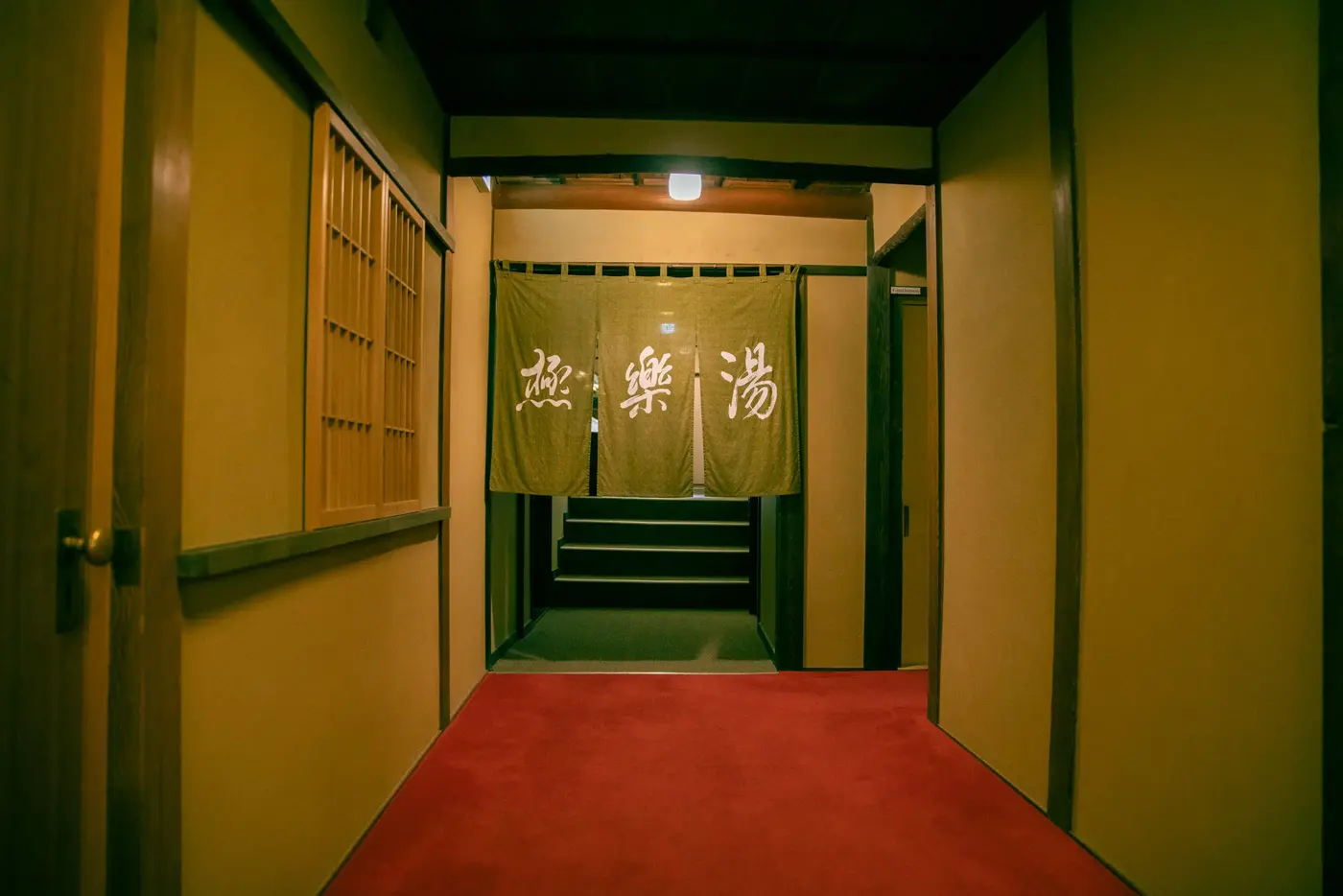
Tenmi was a hot spring resort during the Nanboku-cho period, and it inherited the name of the hot spring "Gokuraku-yu" from that time, and you can also bathe in the hot spring "Gokuraku-yu" at Nanten-en.

The two-and-a-half-hour day trip plan includes a meal and hot spring bath, so you can choose when to bathe in the hot spring. This time, I soaked in the hot spring before dinner to reset myself. After changing into a yukata (additional charge), I gave myself over to a relaxing time in my room overlooking the Japanese garden.
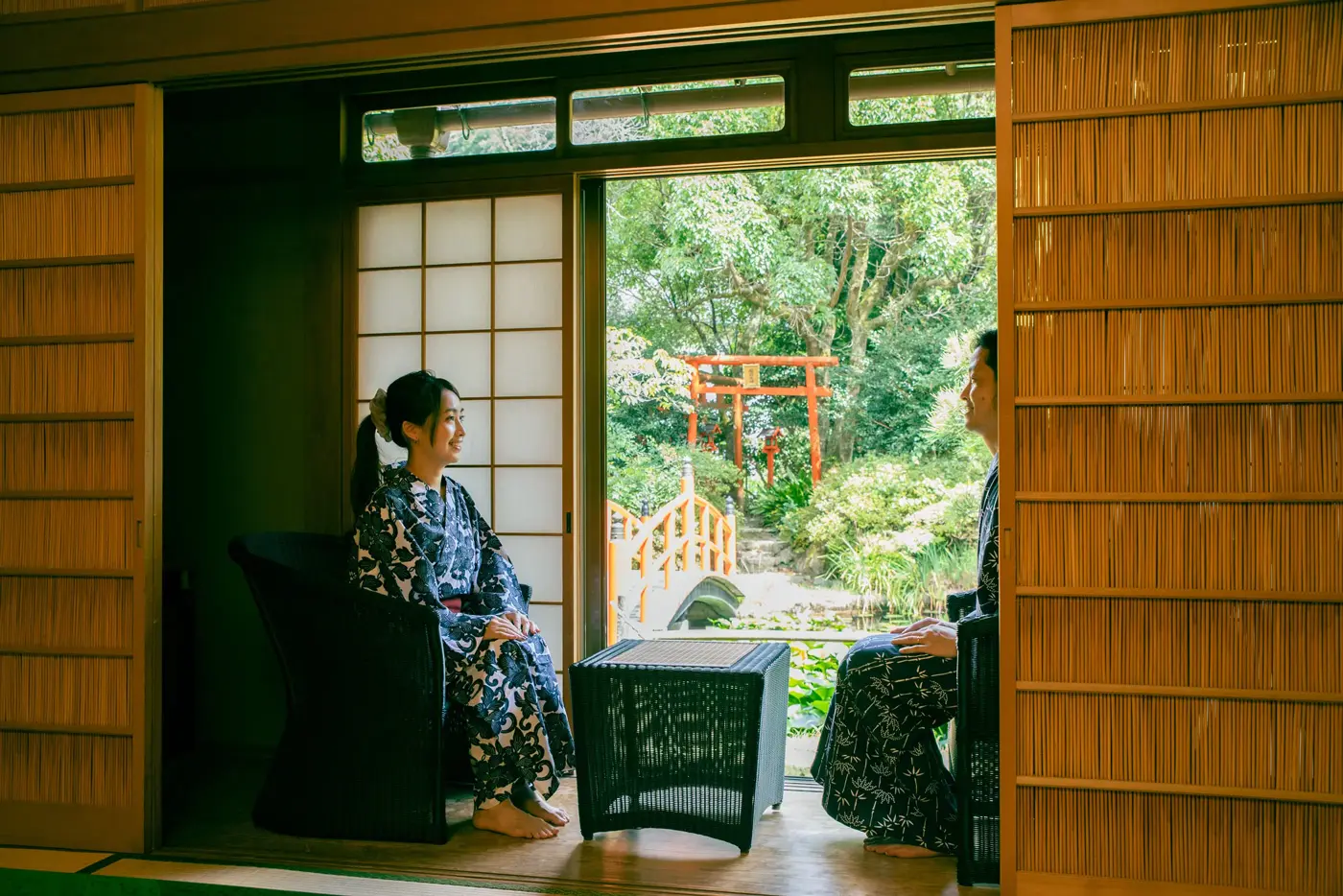
Just as we were taking a breather, the food was brought to us. Today we chose the "Four Seasons Kaiseki Course" (8,800 yen including tax *This is a set that includes meal and day-trip bathing; use of the hot springs alone is not available). The course includes 11 dishes made with plenty of seasonal ingredients from the Kawachinagano area and other areas. We also offer homemade aperitifs and enzyme juices made with fruit from the garden as aperitifs or before-meal drinks.


The menu, which changes every month, is gently and carefully seasoned, and the dishes all allow you to experience the deliciousness of the finely-honed ingredients. "Many people come to celebrate longevity, their children's 100th day celebrations, and wedding anniversaries," says the proprietress. Recently, there has been an increase in foreign tourists using day trip plans in addition to staying overnight.
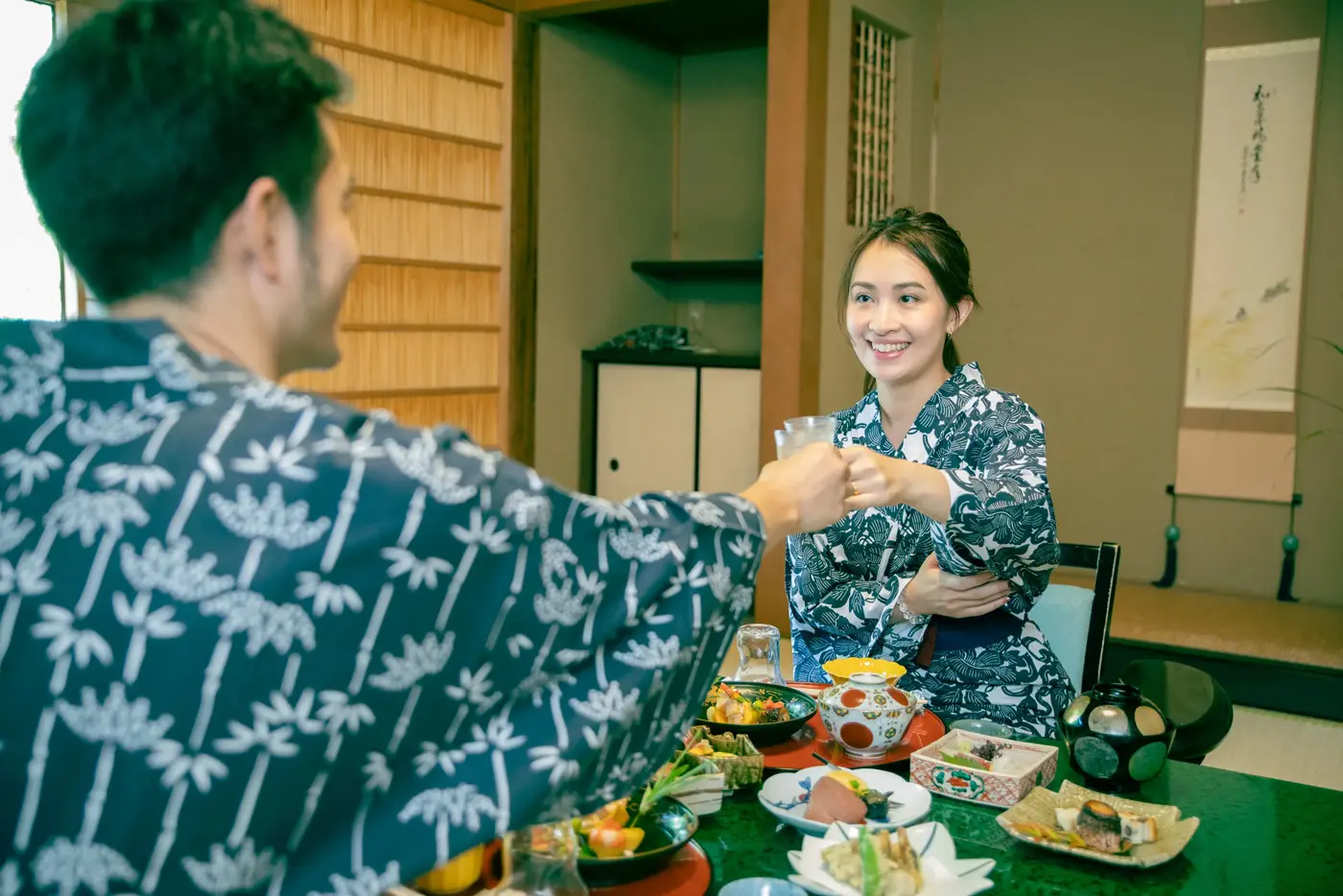
Relaxing at a hot spring inn requires a certain amount of time and money, but if you can enjoy high-quality kaiseki cuisine and hot springs on a day trip, it's definitely worth choosing, not just as a reward, but also as a short outing.
In addition to the day trip plan we tried this time, Nanten-en also offers plans where you can experience the tea ceremony, flower arranging, and even armor-wearing. They also offer vegetarian, vegan, and Muslim-friendly menus, and are constantly striving to ensure that people from all over the world can enjoy seasonal ingredients with peace of mind.

Since I have a dog, it's not easy to travel, so being able to spend a day at a hot spring inn was great as it gave me the feeling of being on vacation! The view of the Japanese garden from the room was beautiful, and the walk after dinner was fun.

Amami and Nagaredani are filled with nature and relaxation, and you can go there whenever you want.

This concludes our stroll. Even in the short half-day, we were able to spend a rich time admiring the various plants and trees and learning about history. "It's so full of nature, so I'd love to come back during the autumn foliage season," says Rachel. Because the natural environment of the satoyama remains intact, you can fully enjoy the different scenery that changes with the seasons. Being able to experience the feeling of traveling while only about 40 minutes from Namba is sure to add a little luxury to your daily life. Also, near Nanten-en, there is a cafe called Kyuemon, which is run by the same Nanten-en and uses an old house, so we recommend stopping by on your way back.
Be sure to grab your camera and enjoy your little trip while capturing your own unique views of Amami and Nagaredani.
Photo: Yuji Takatsu
Edit: Yuji Takatsu
Direction: Ningen Henshusha
